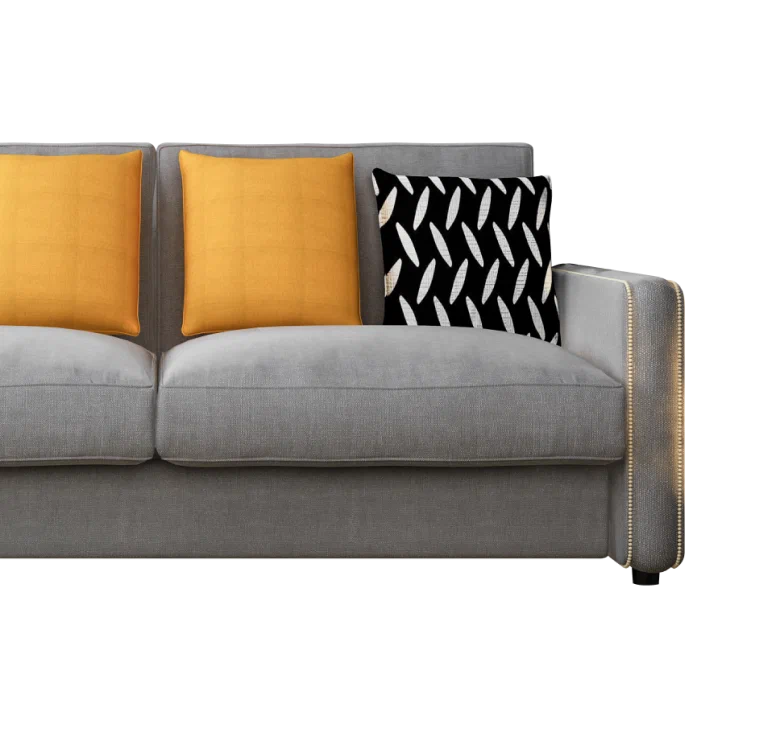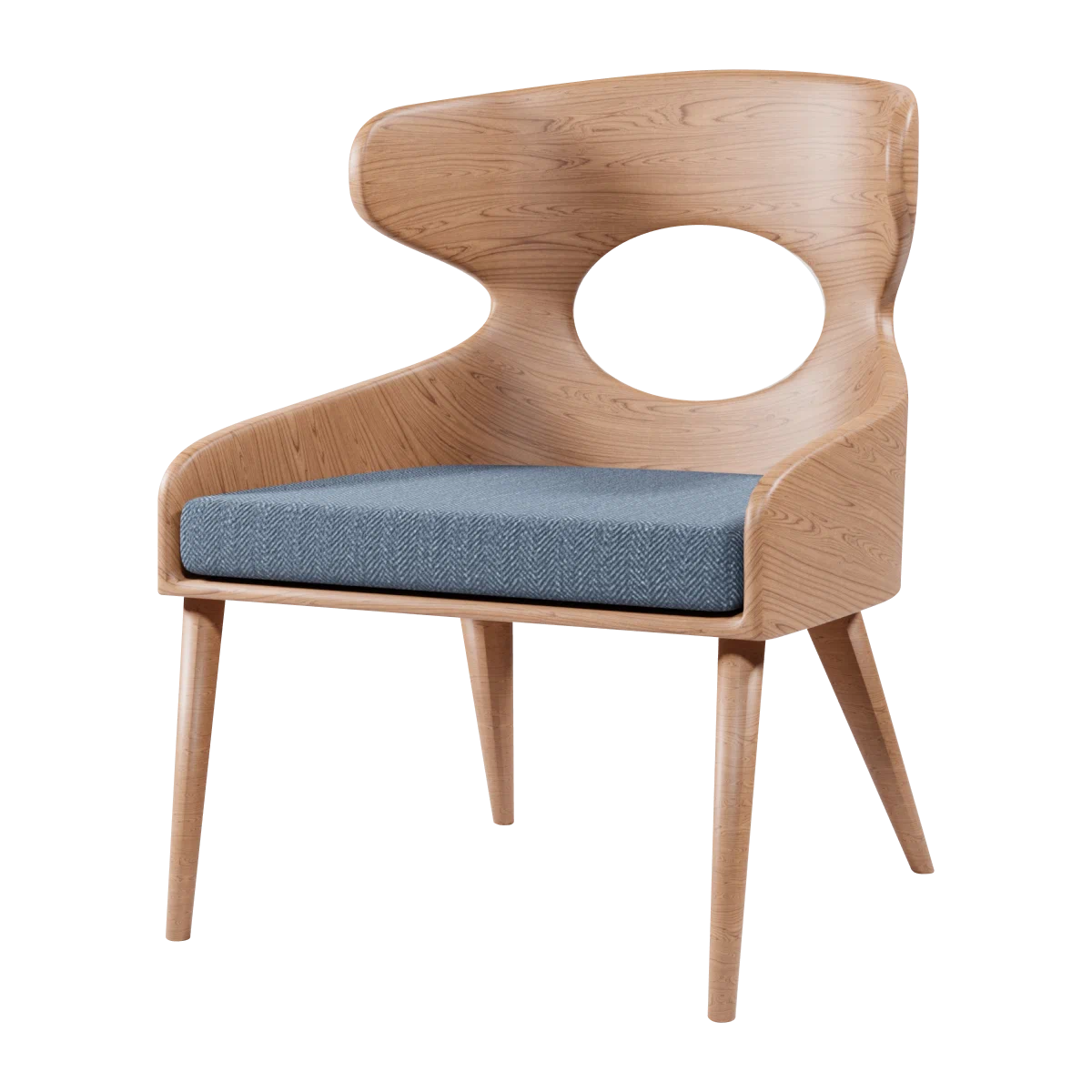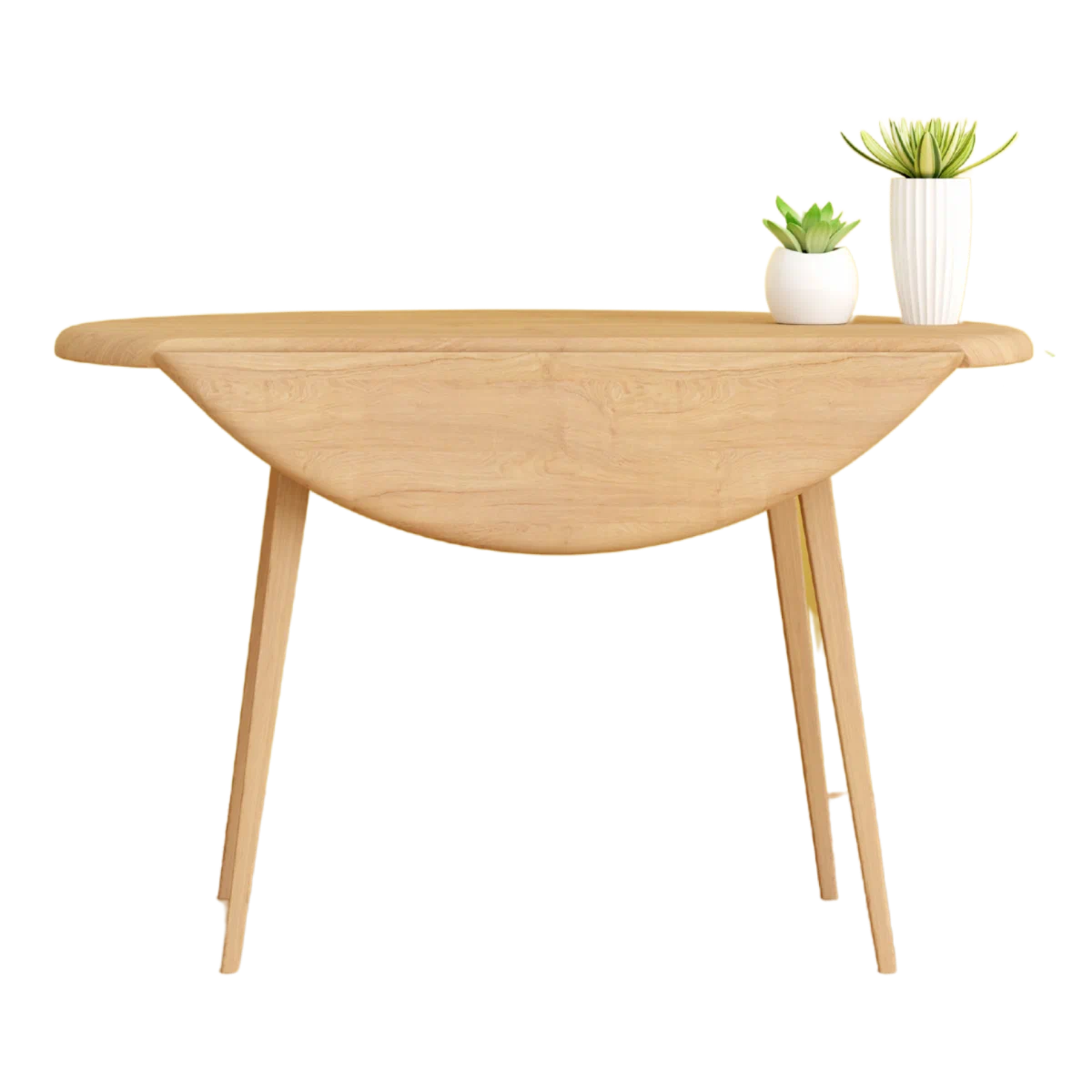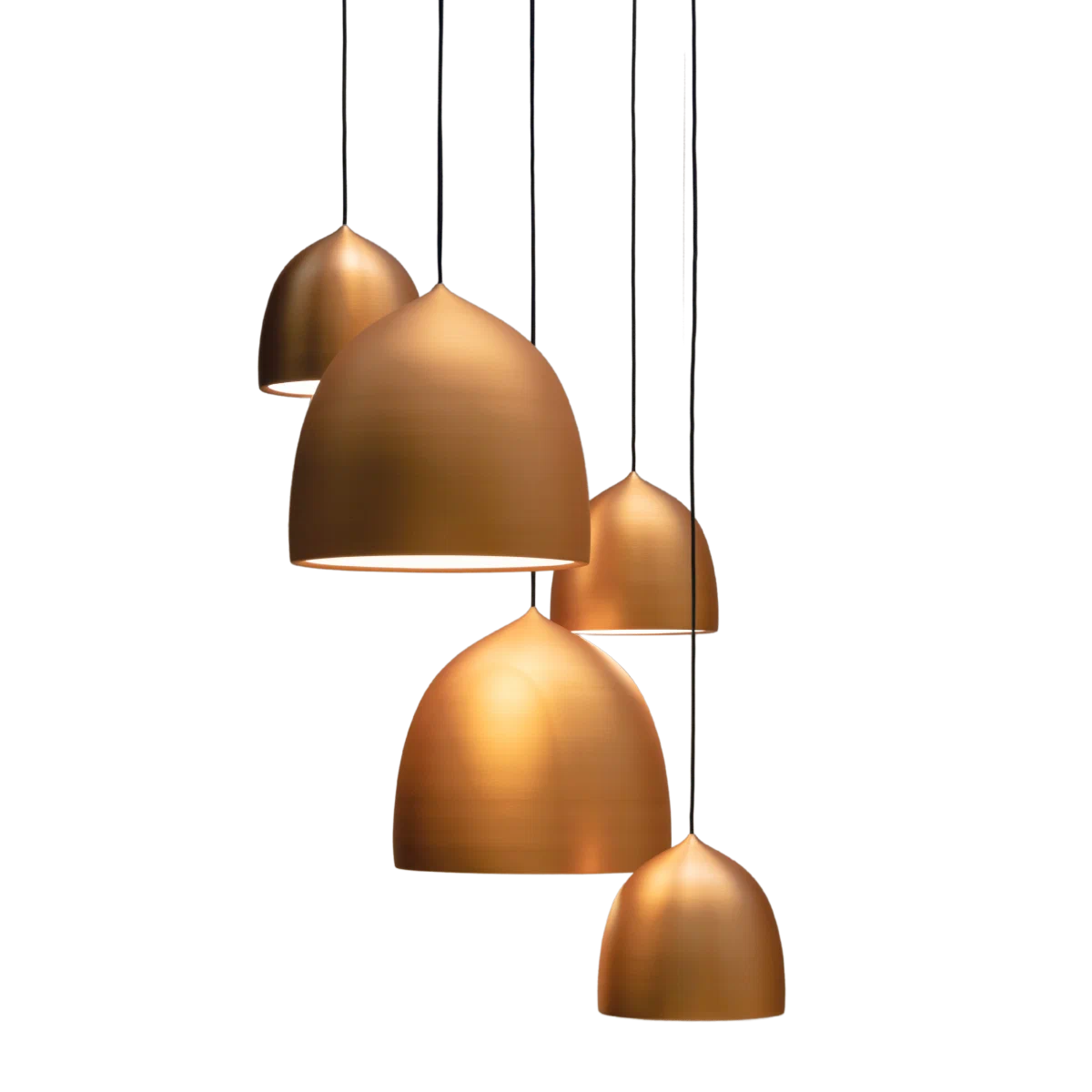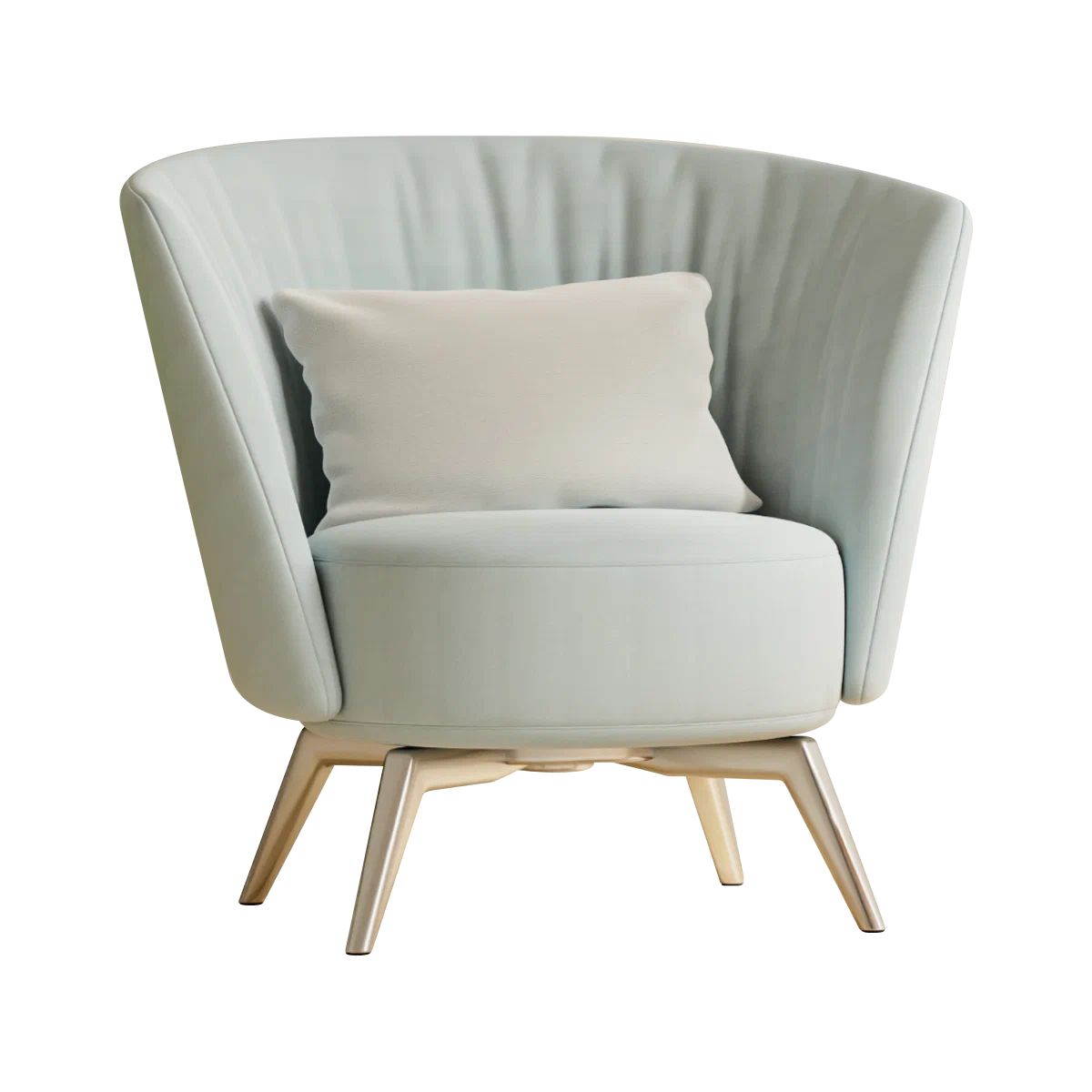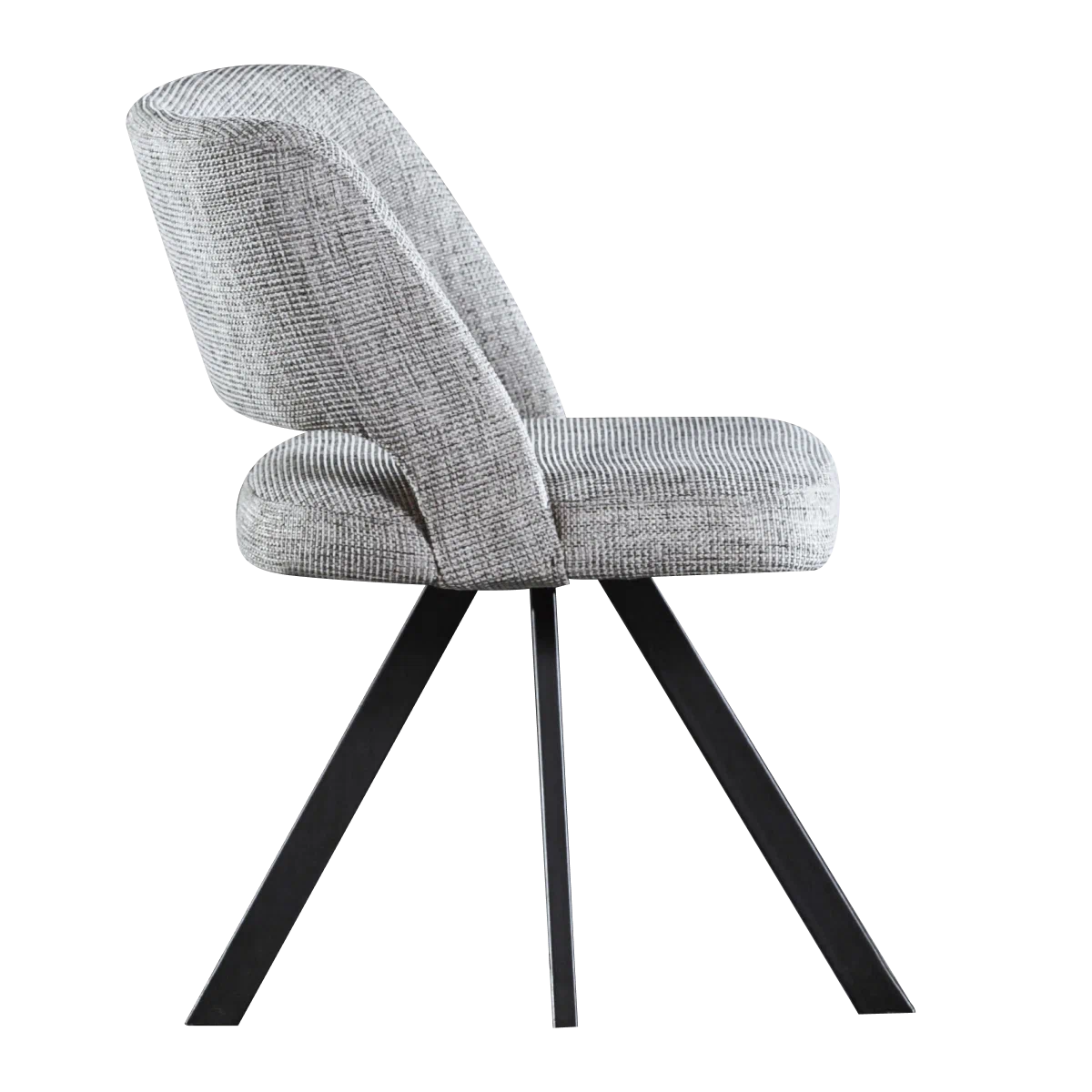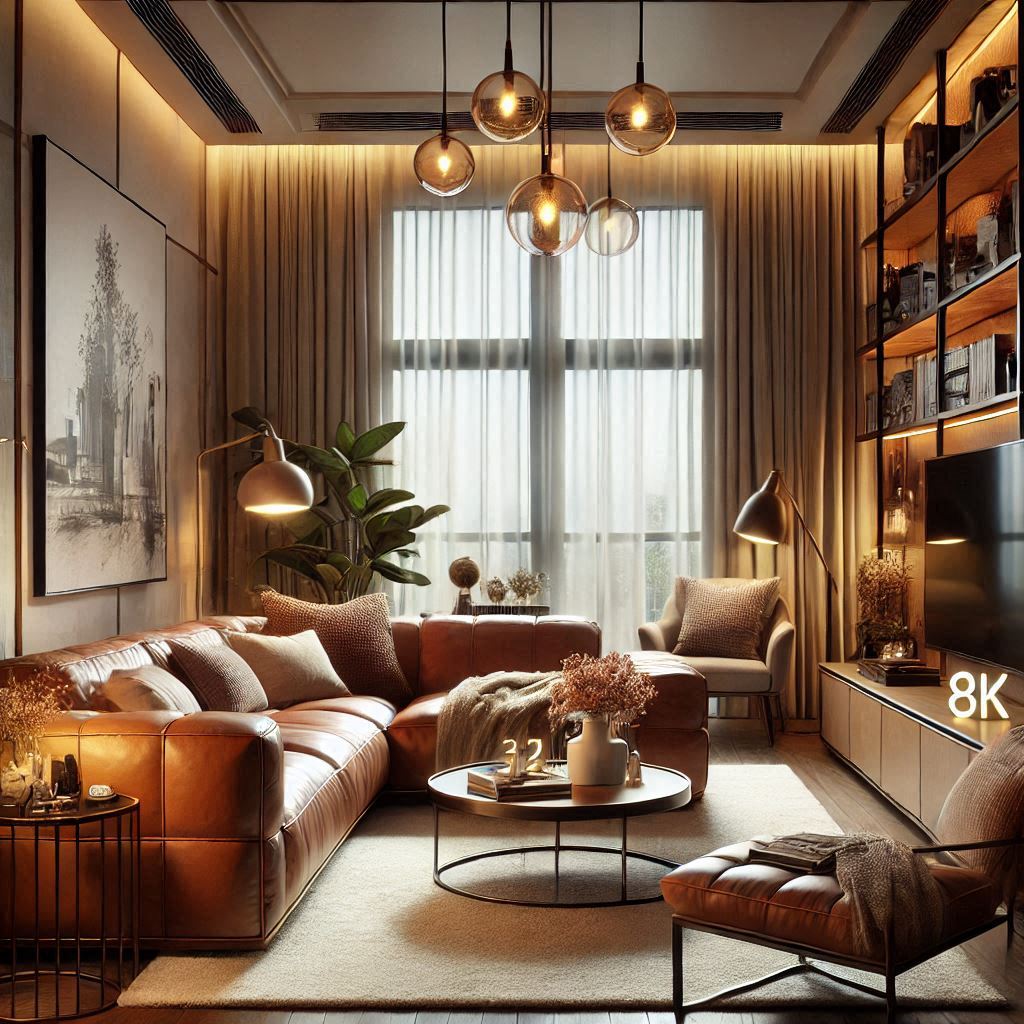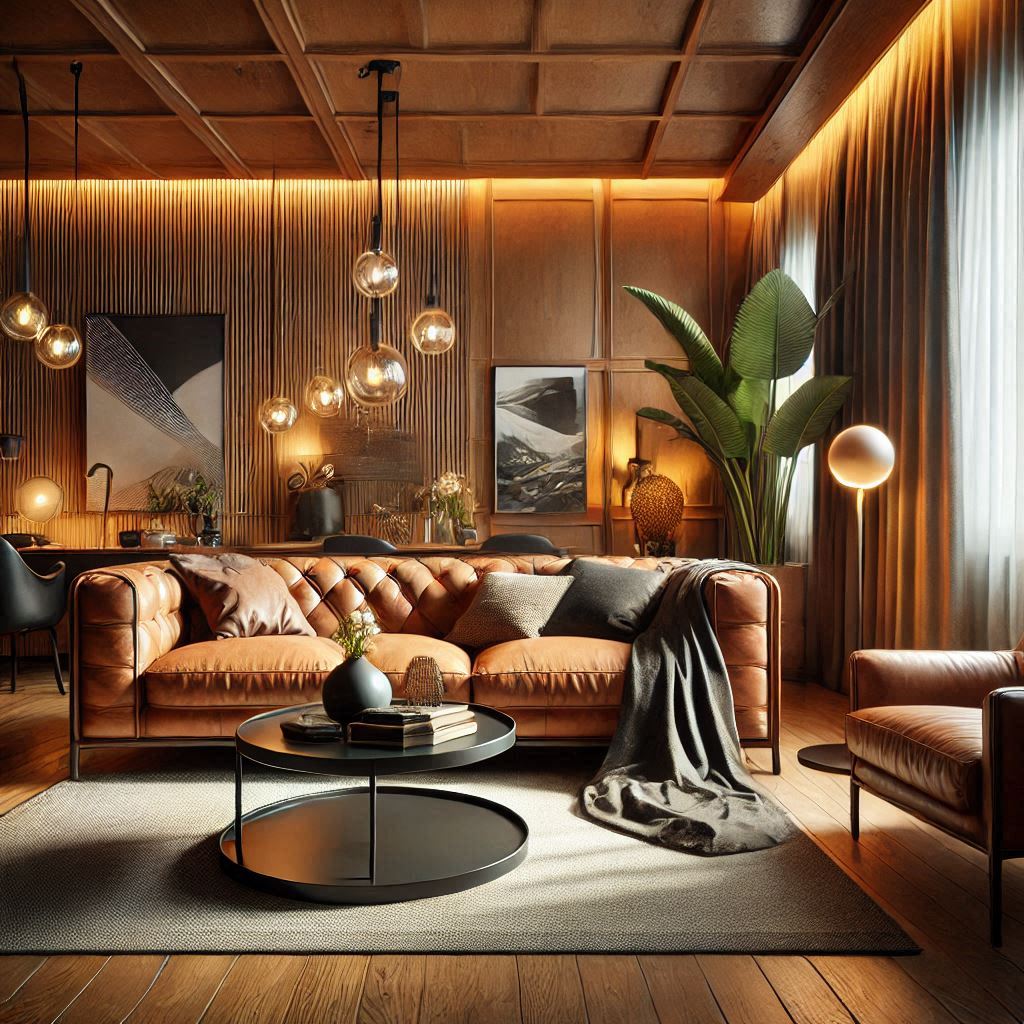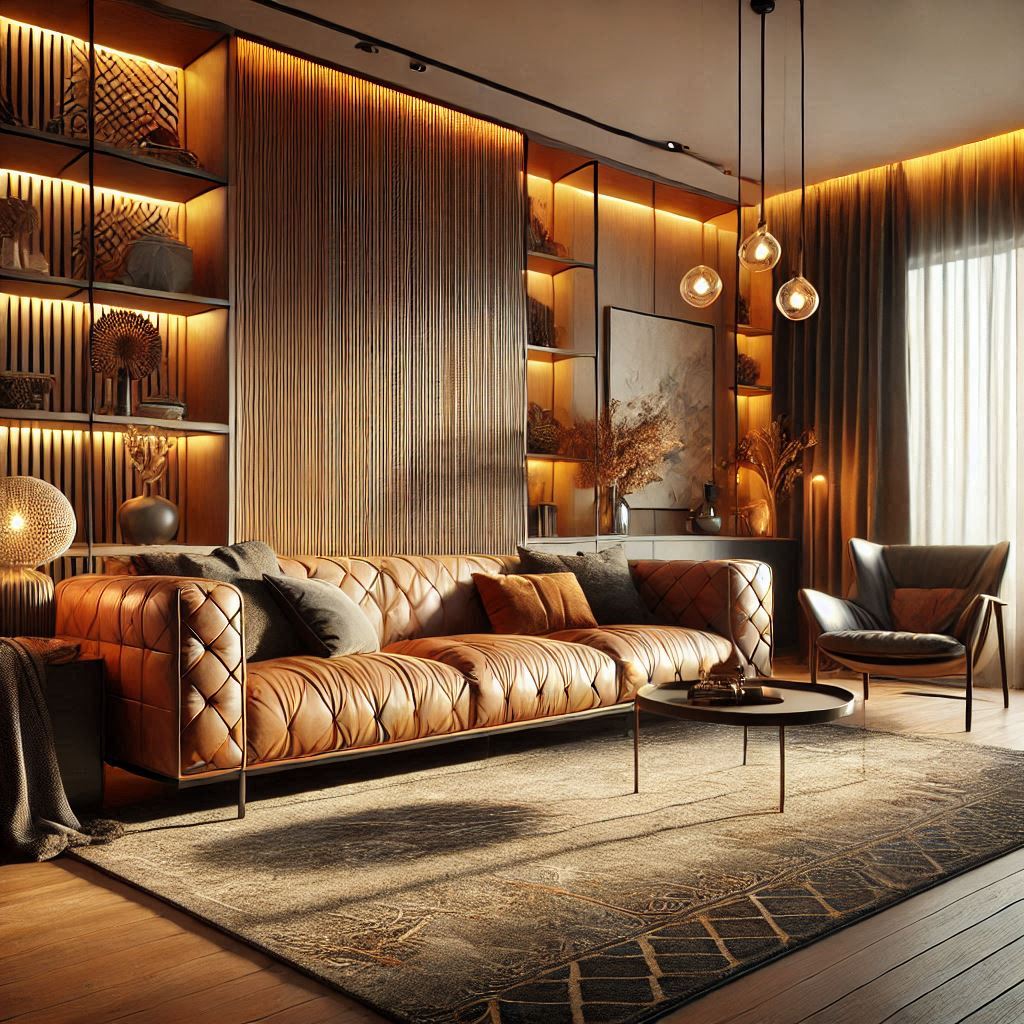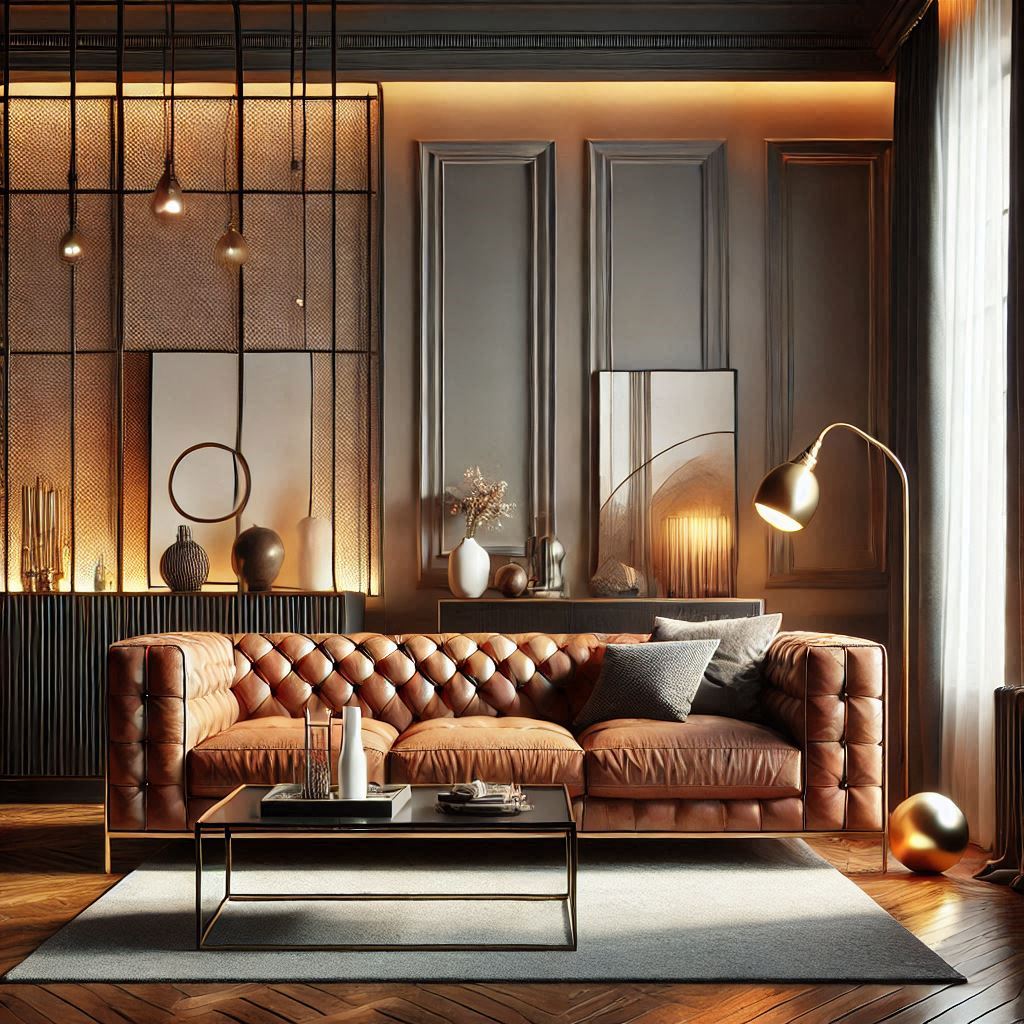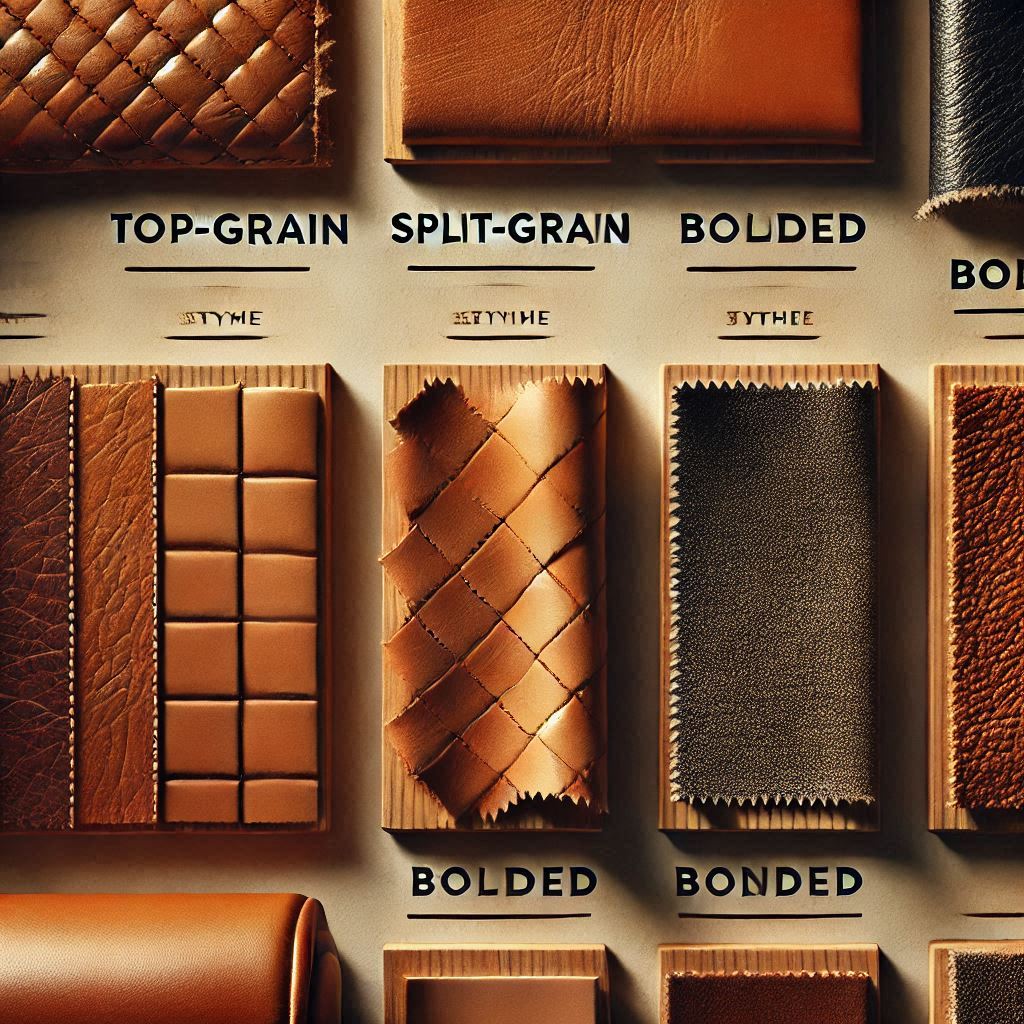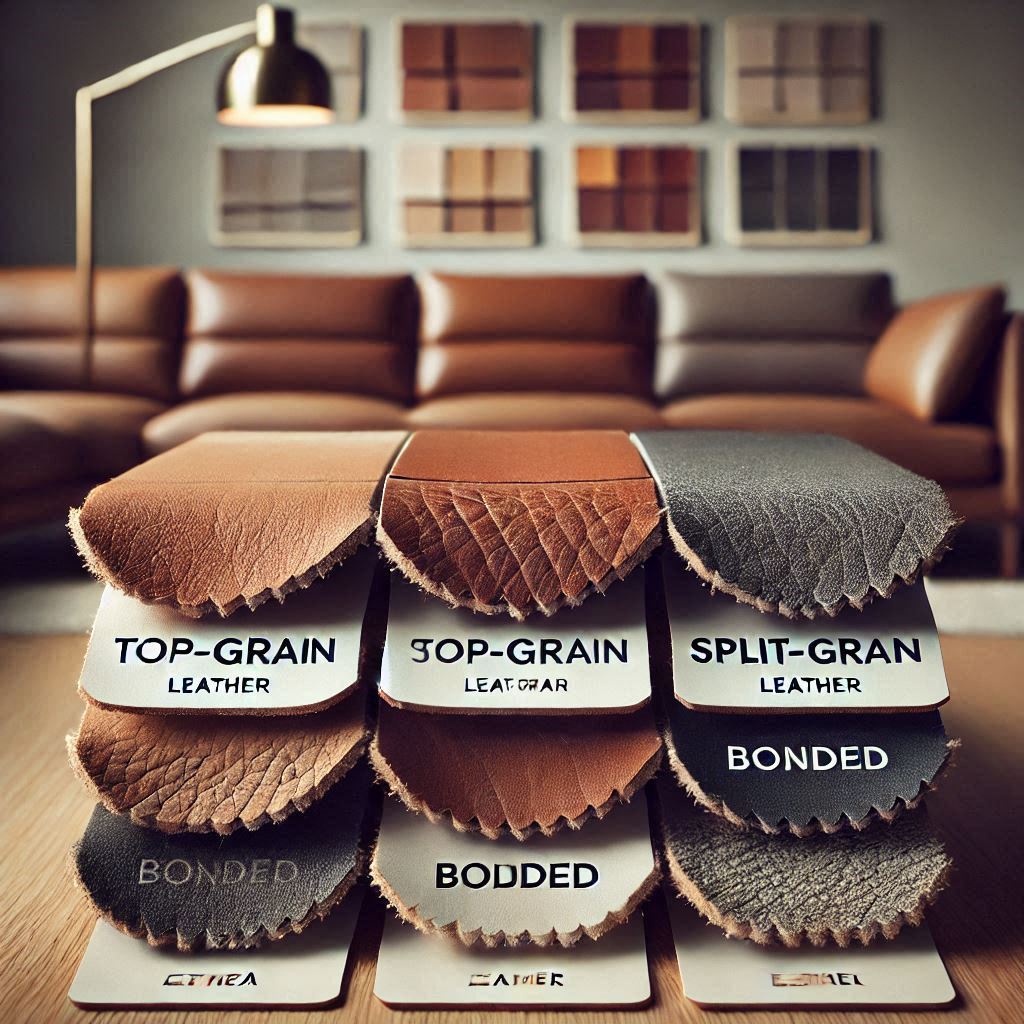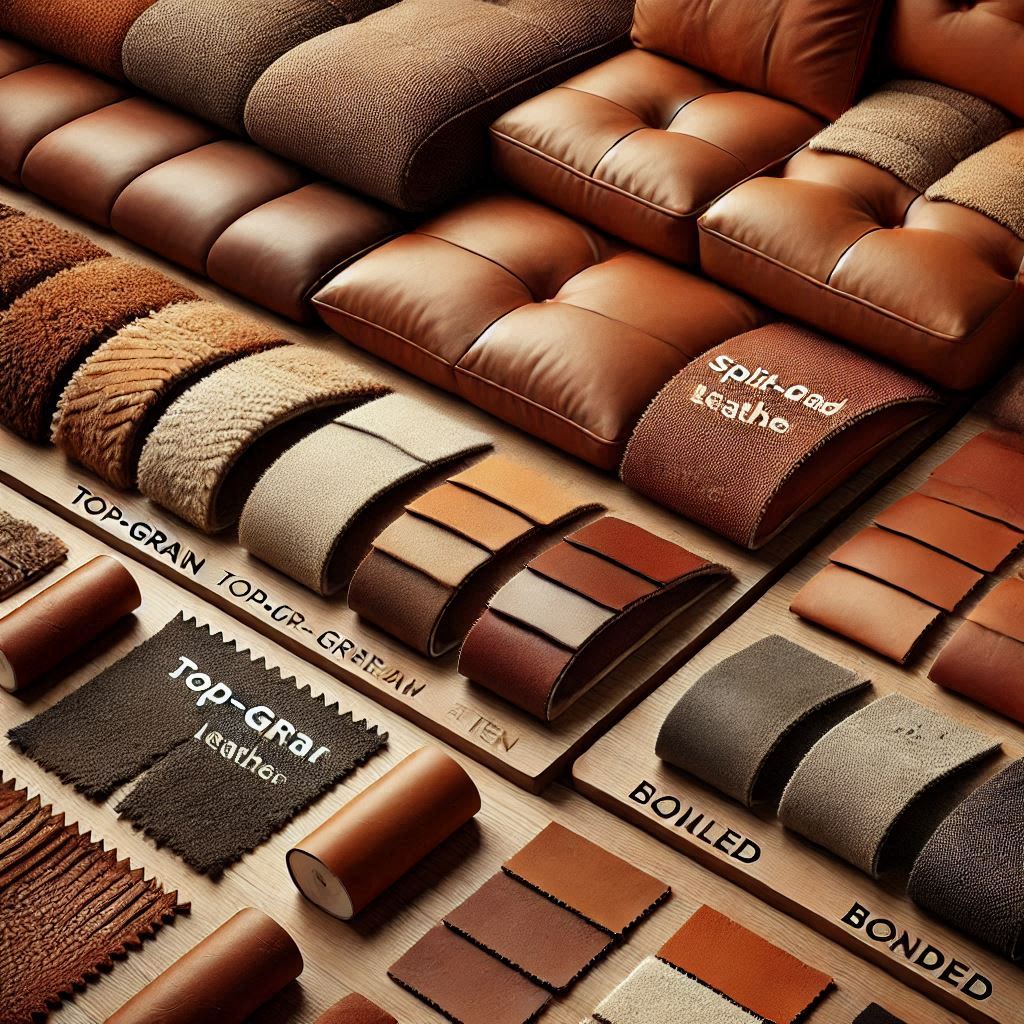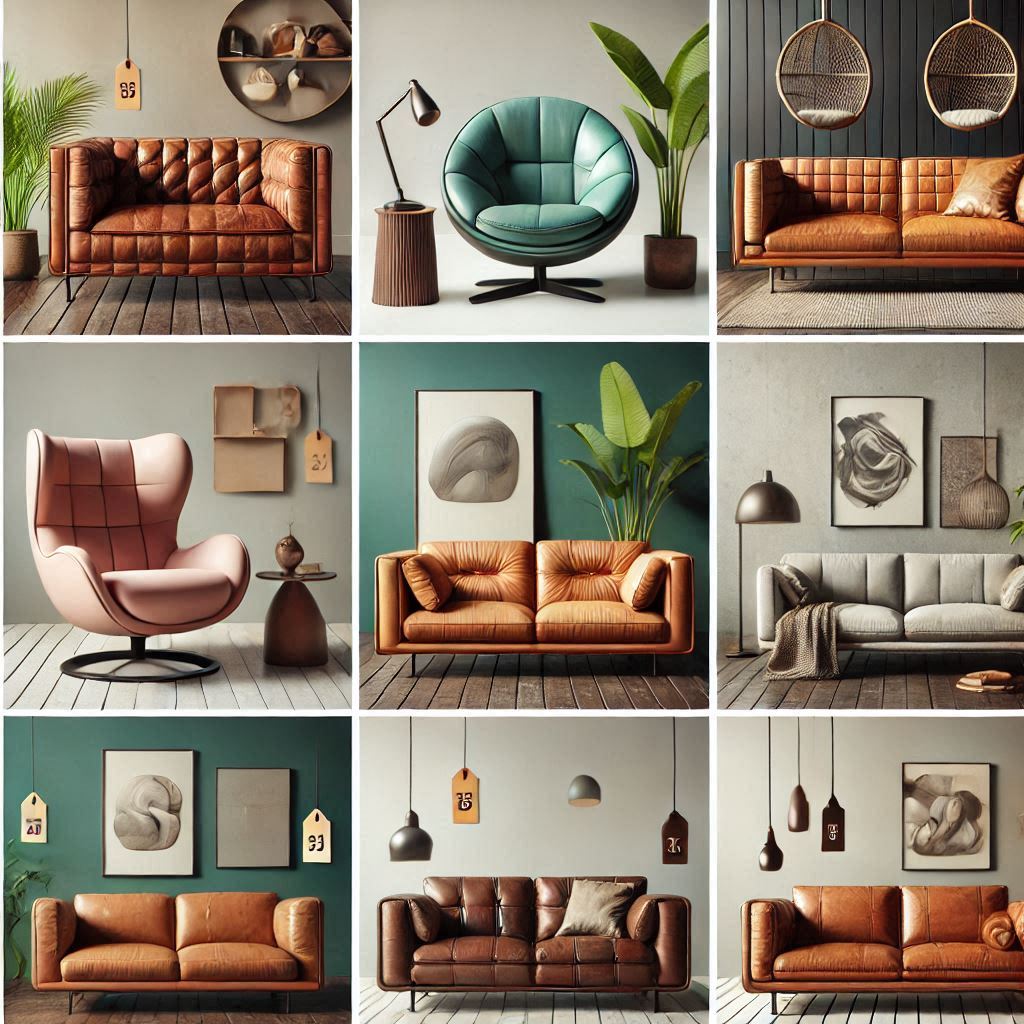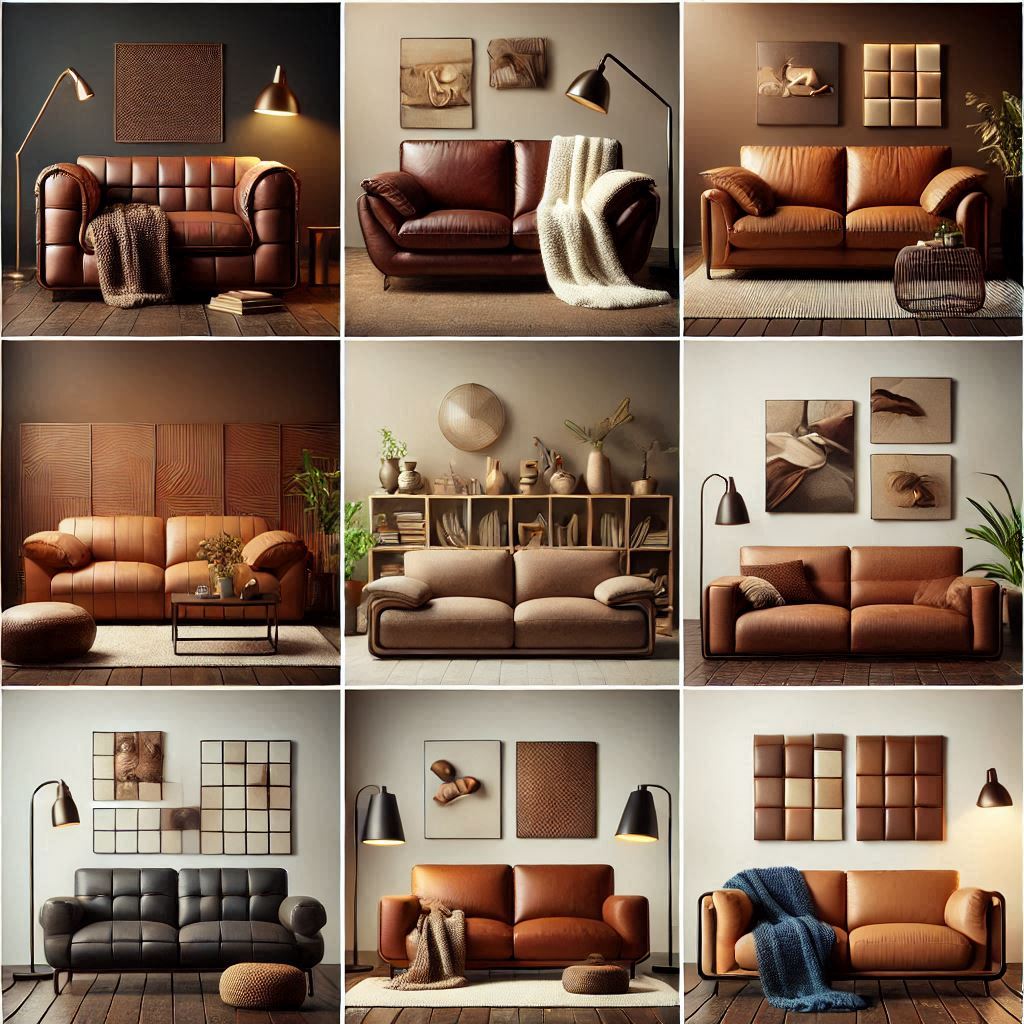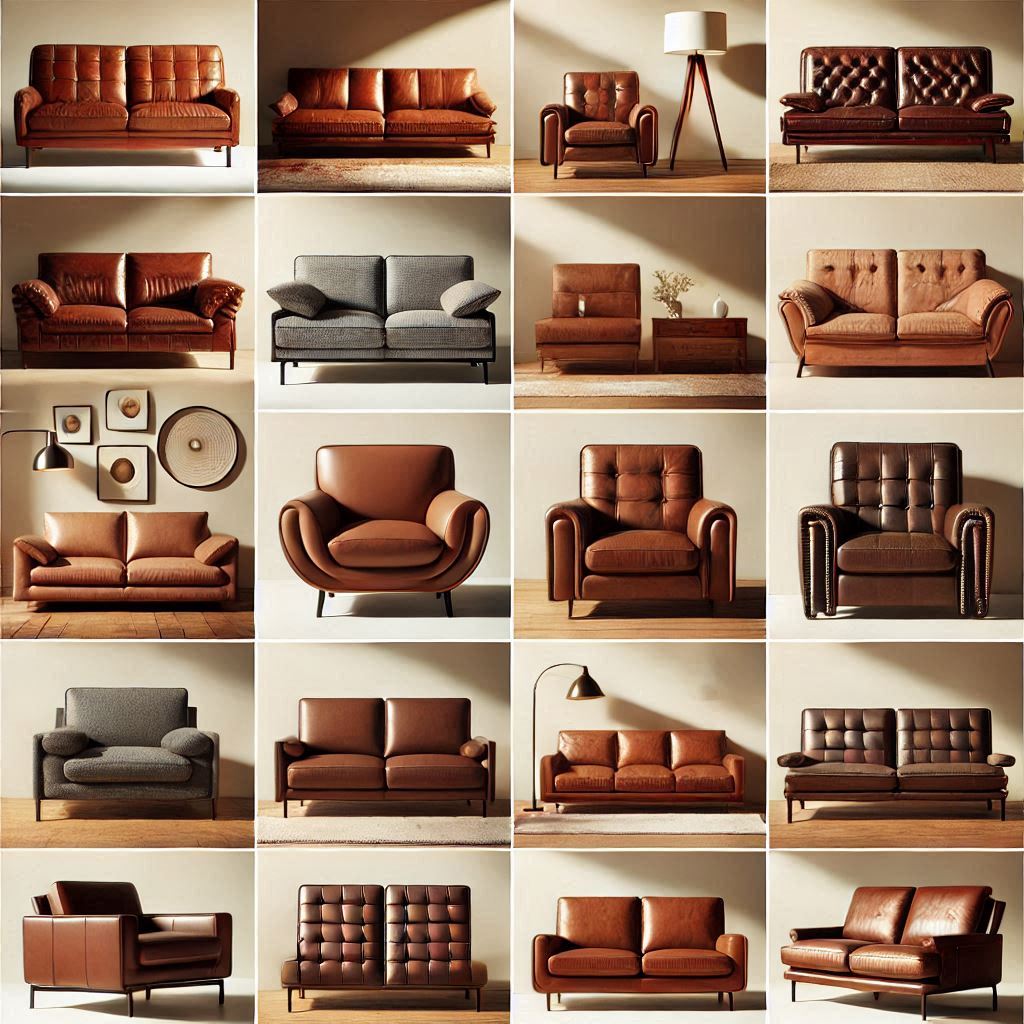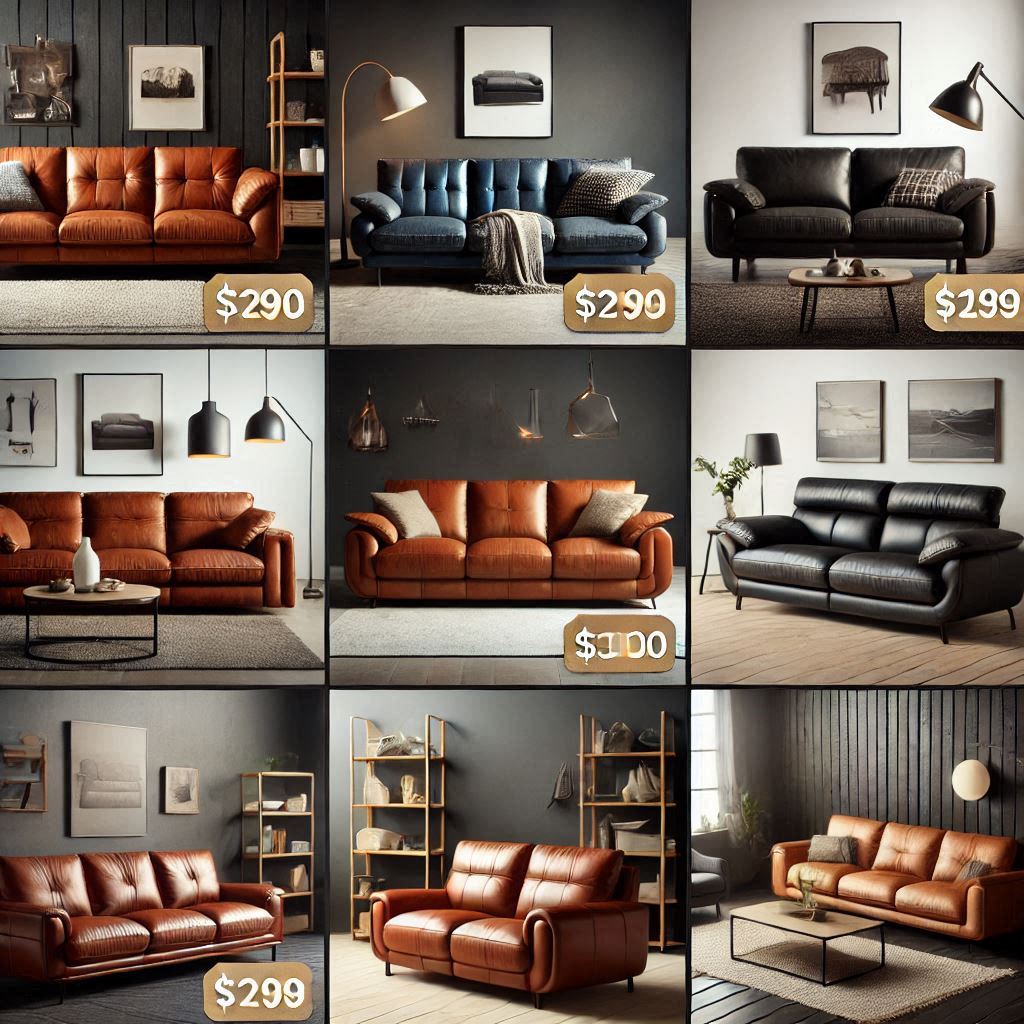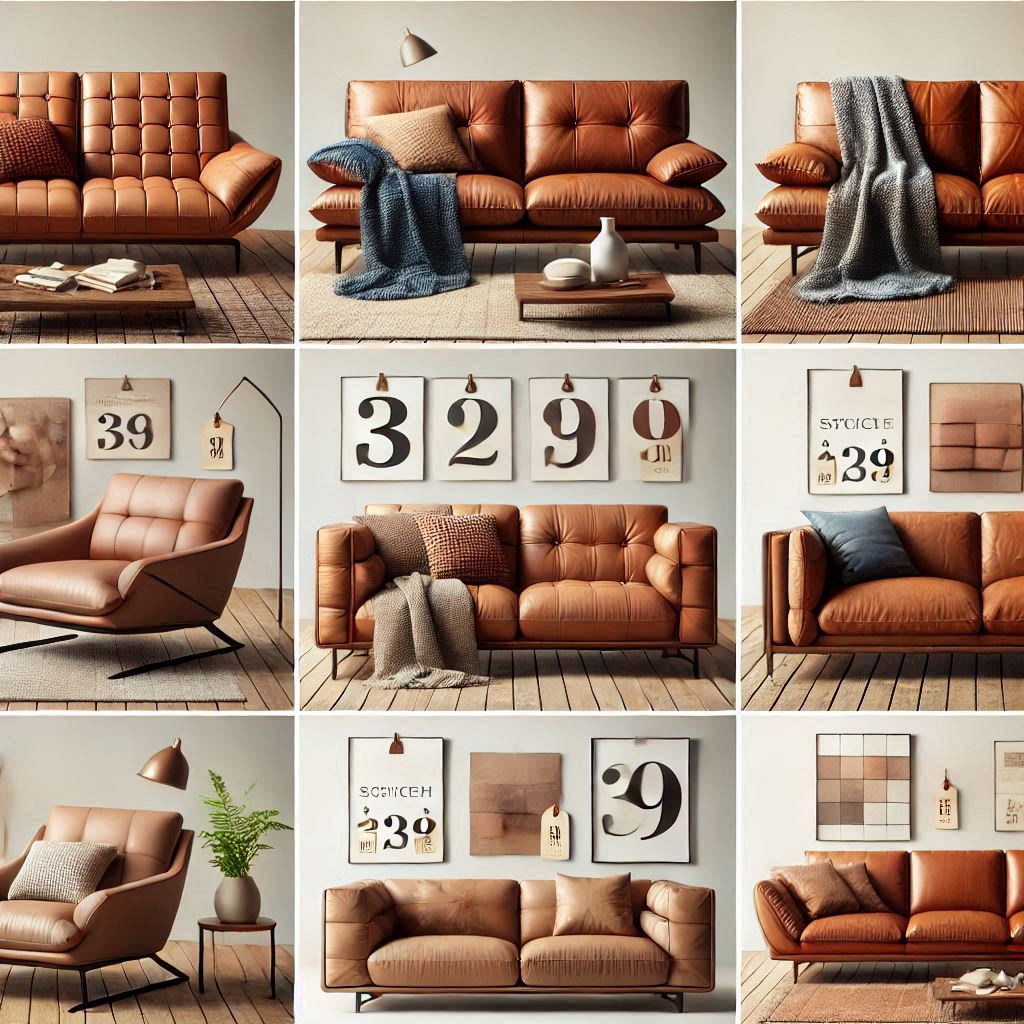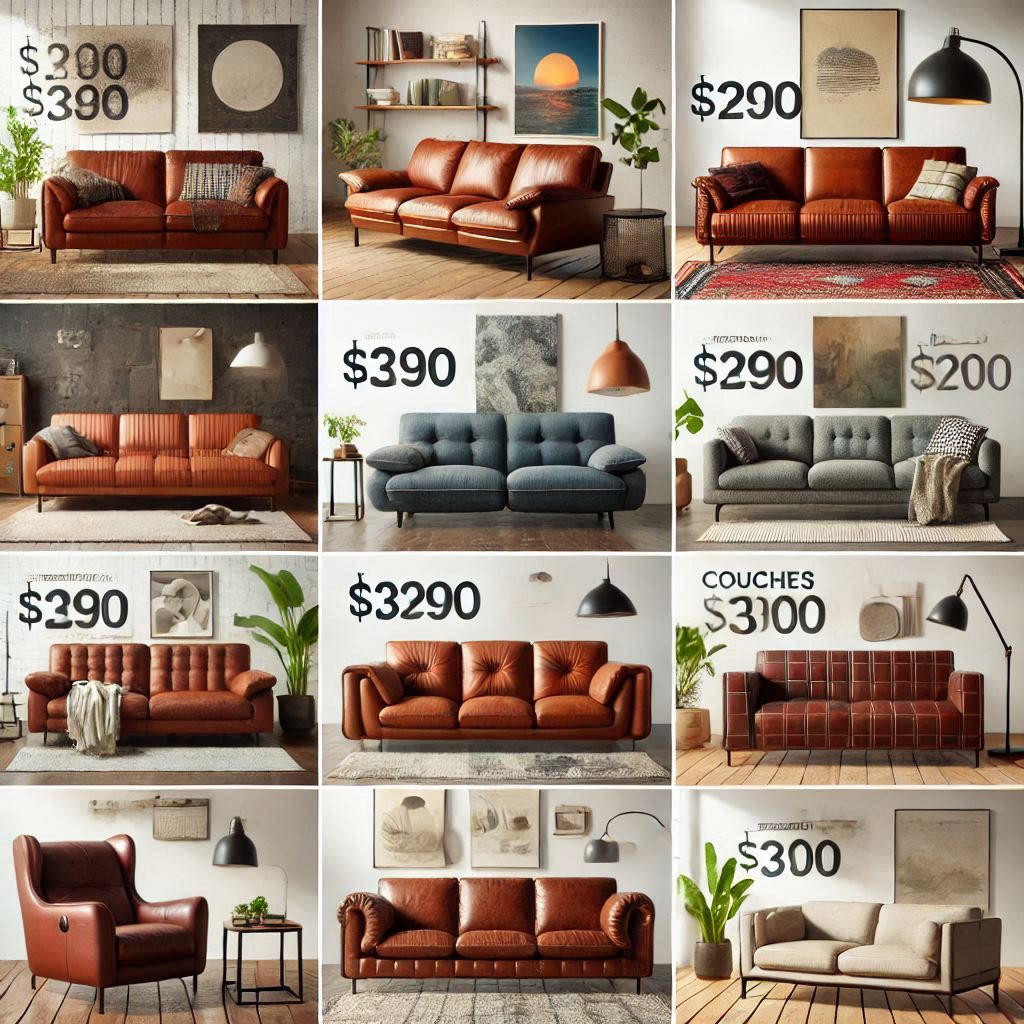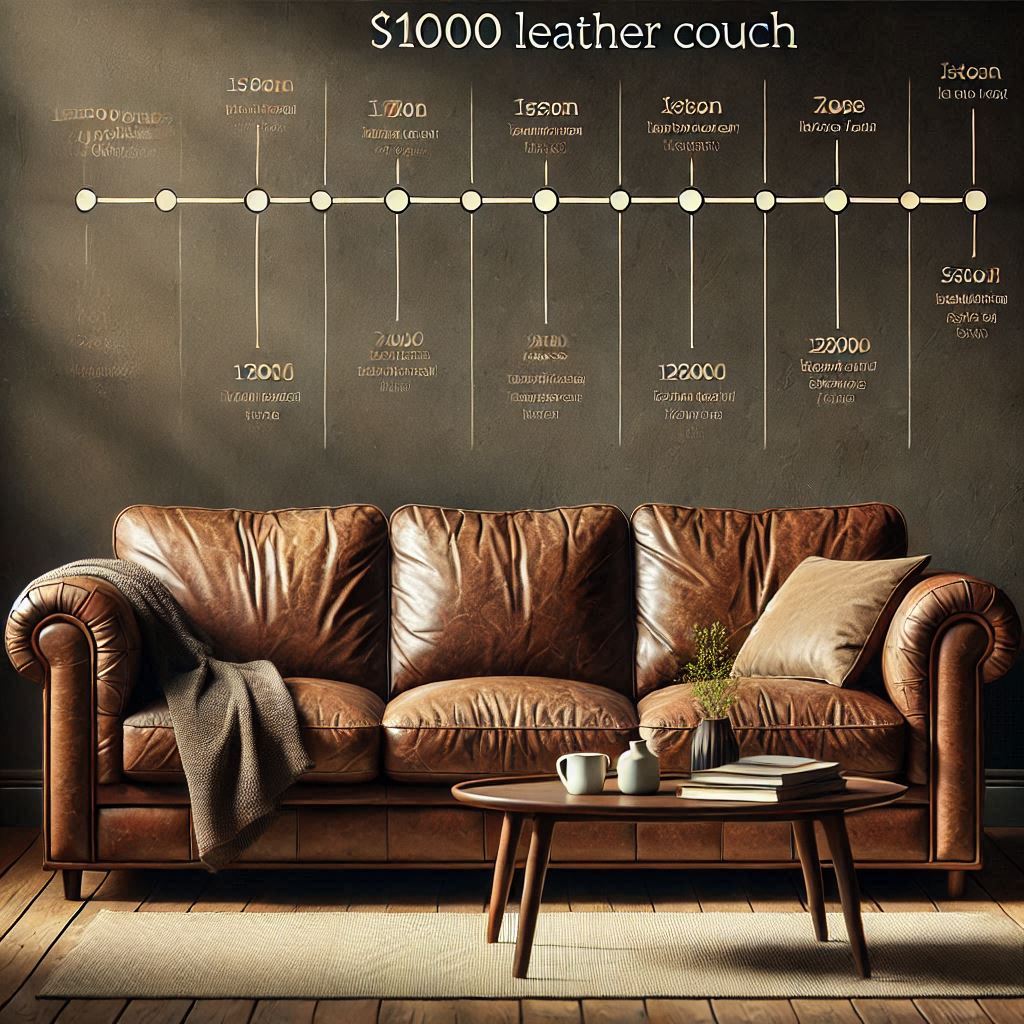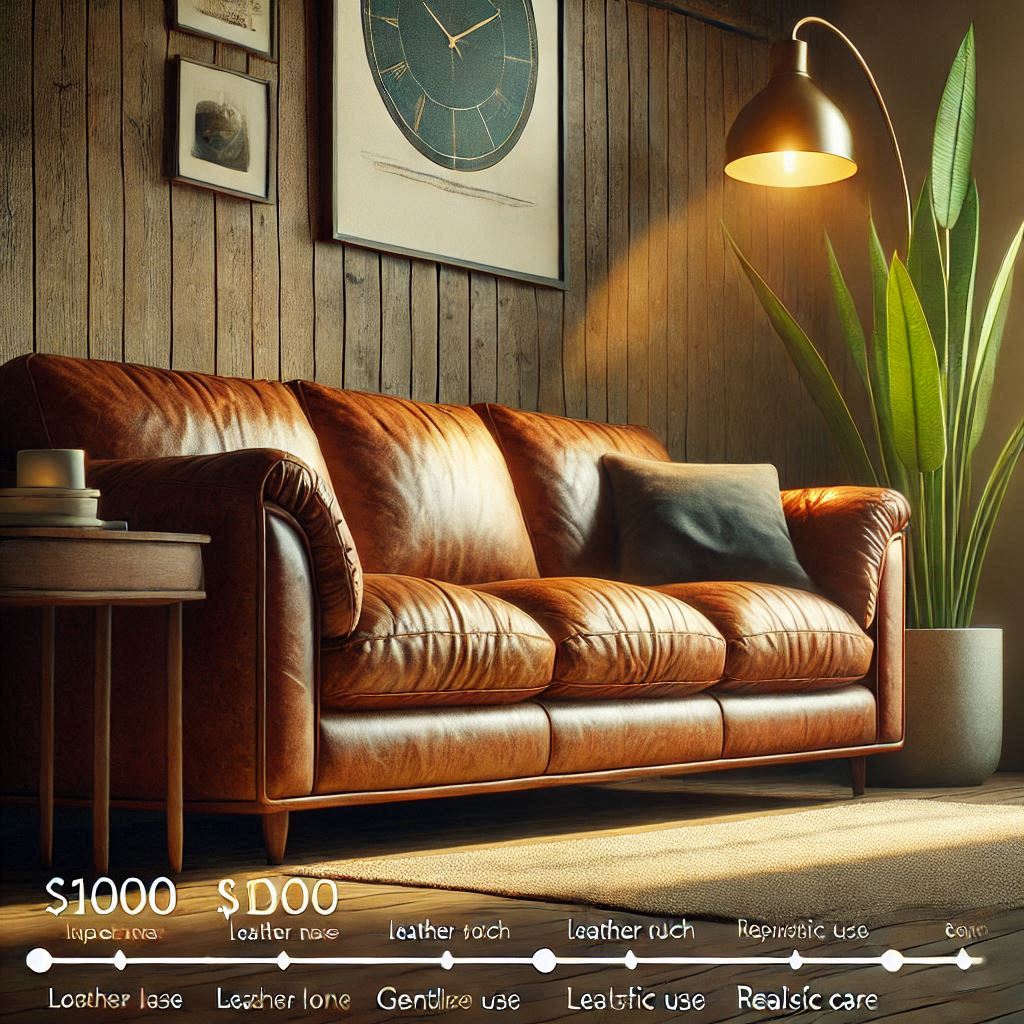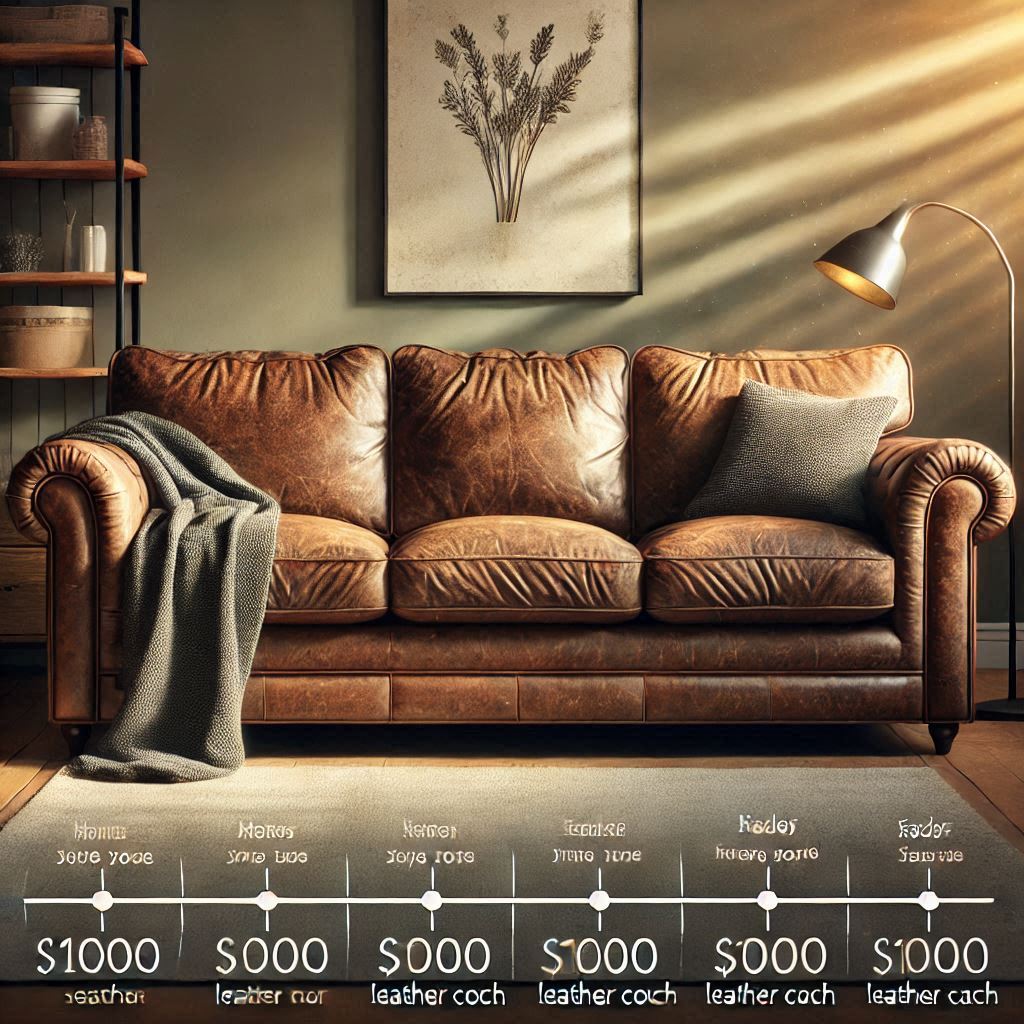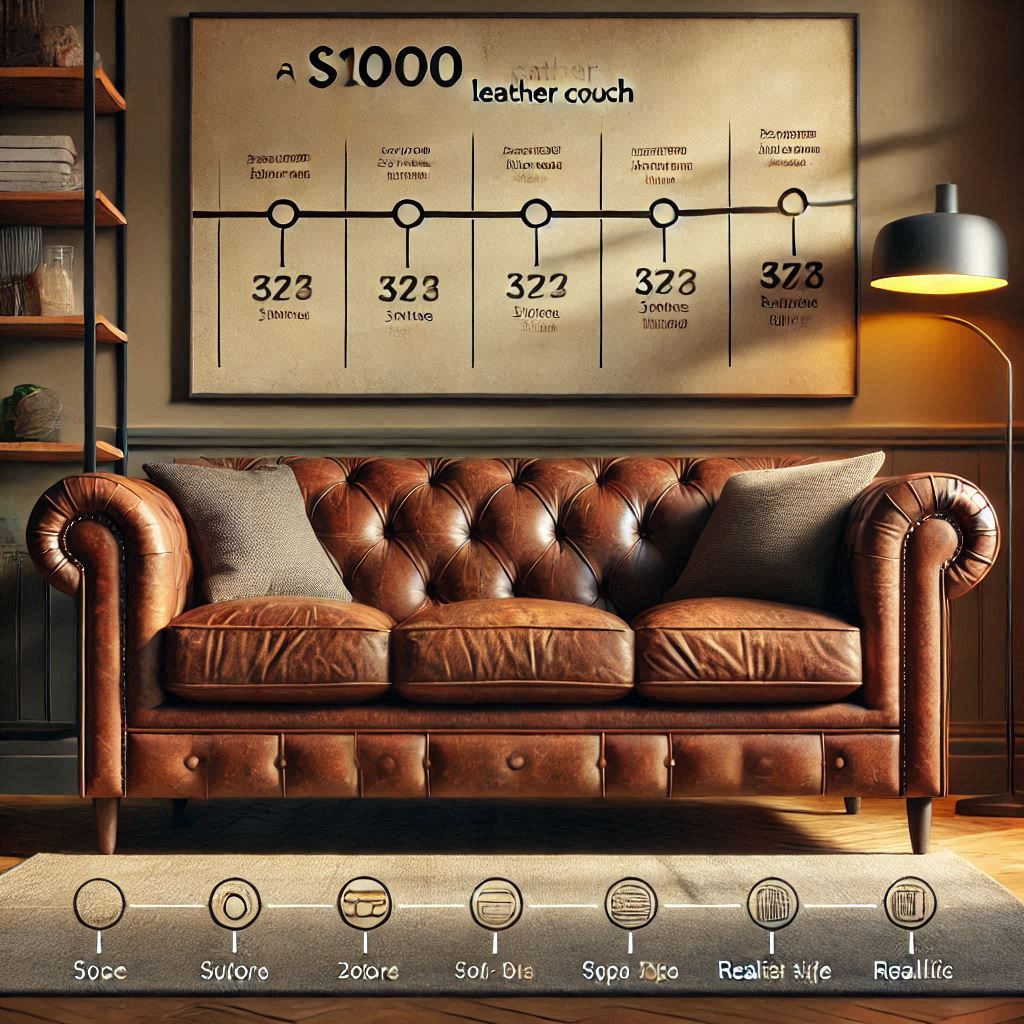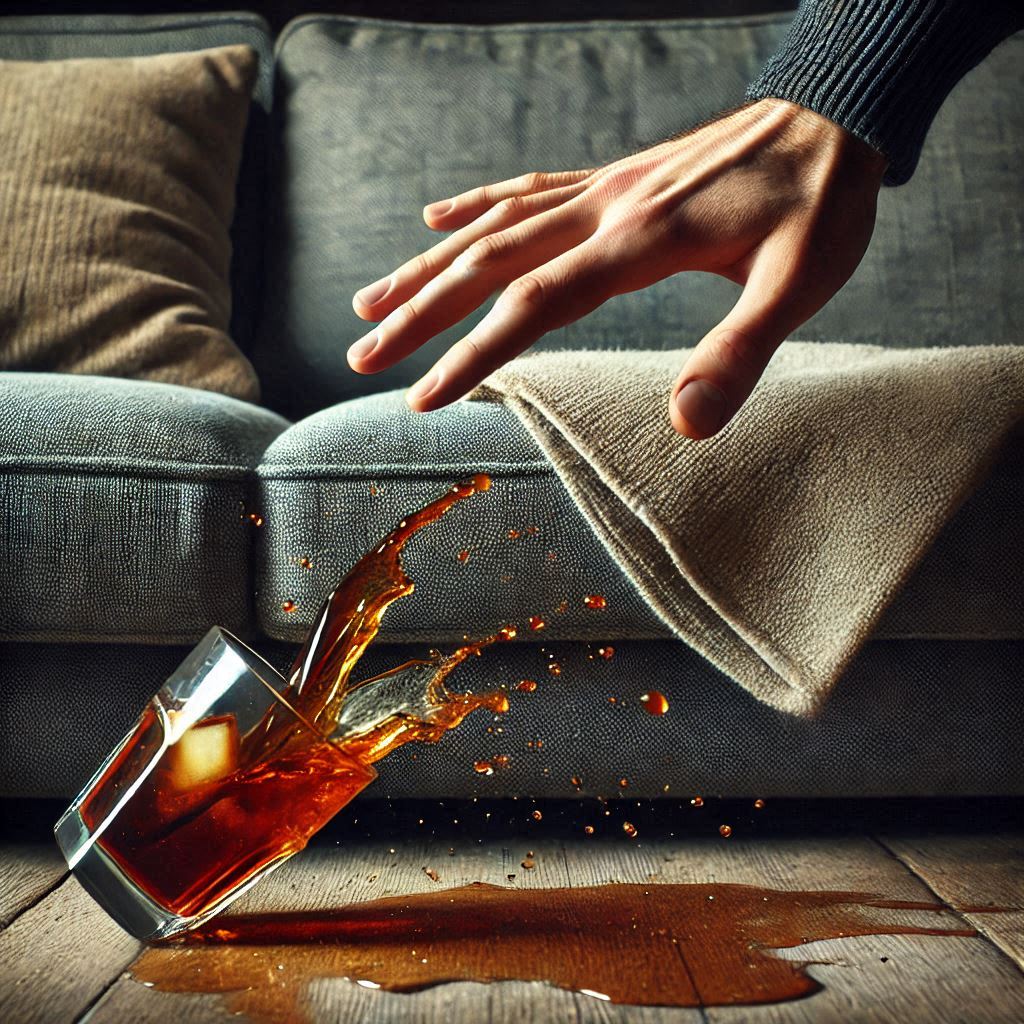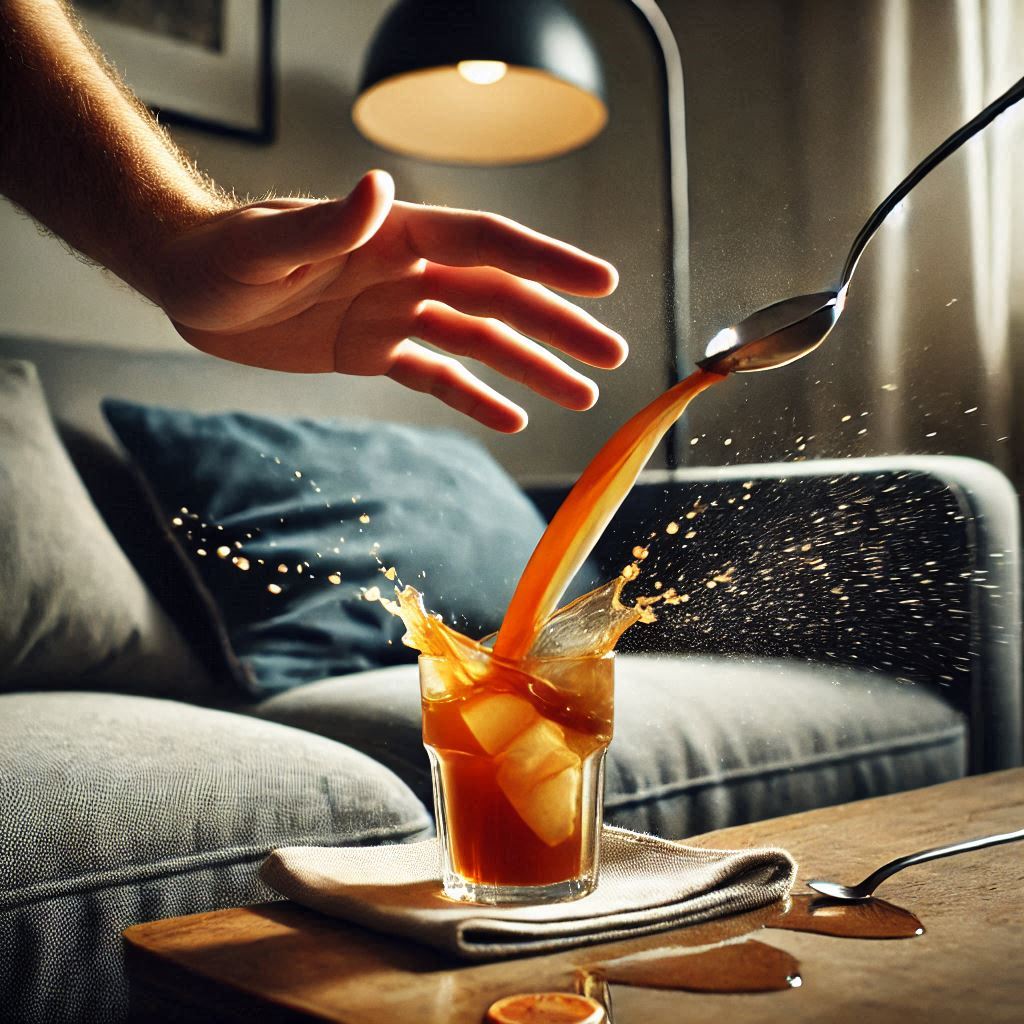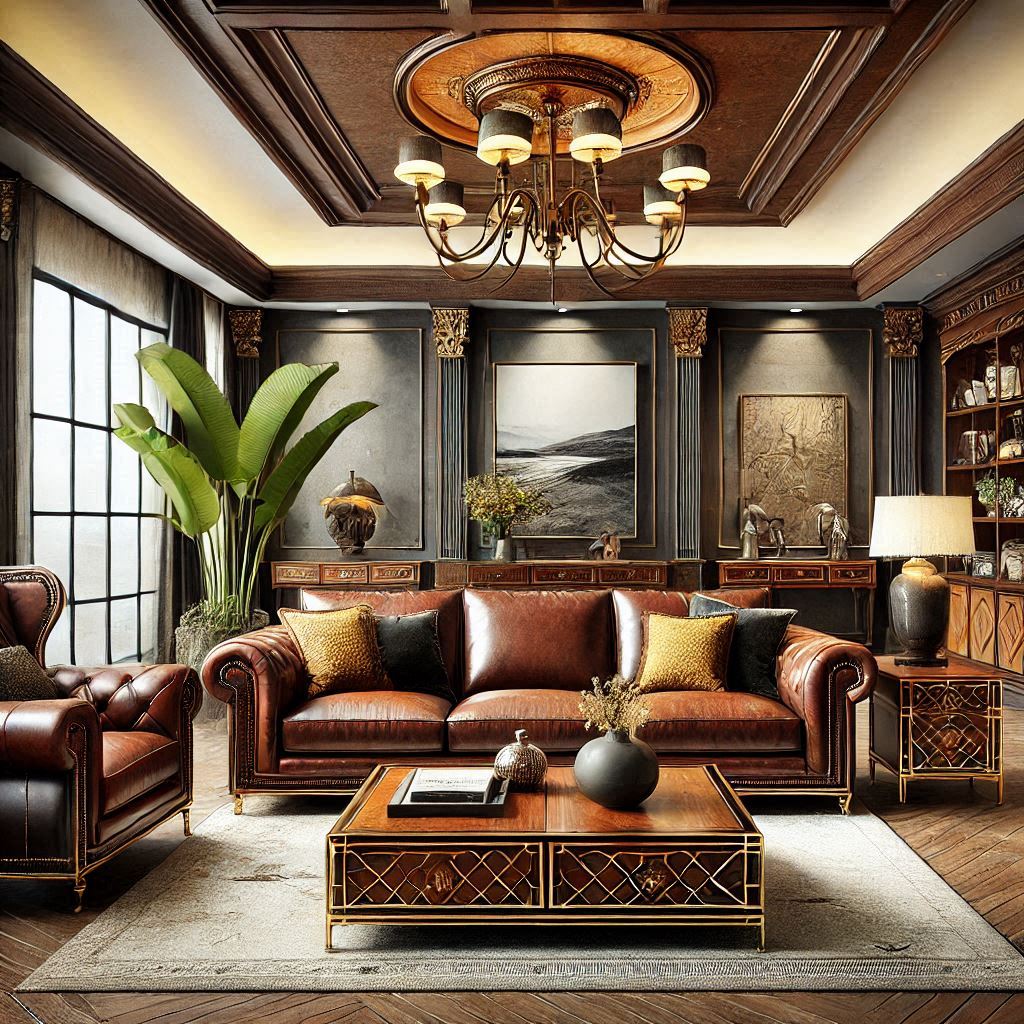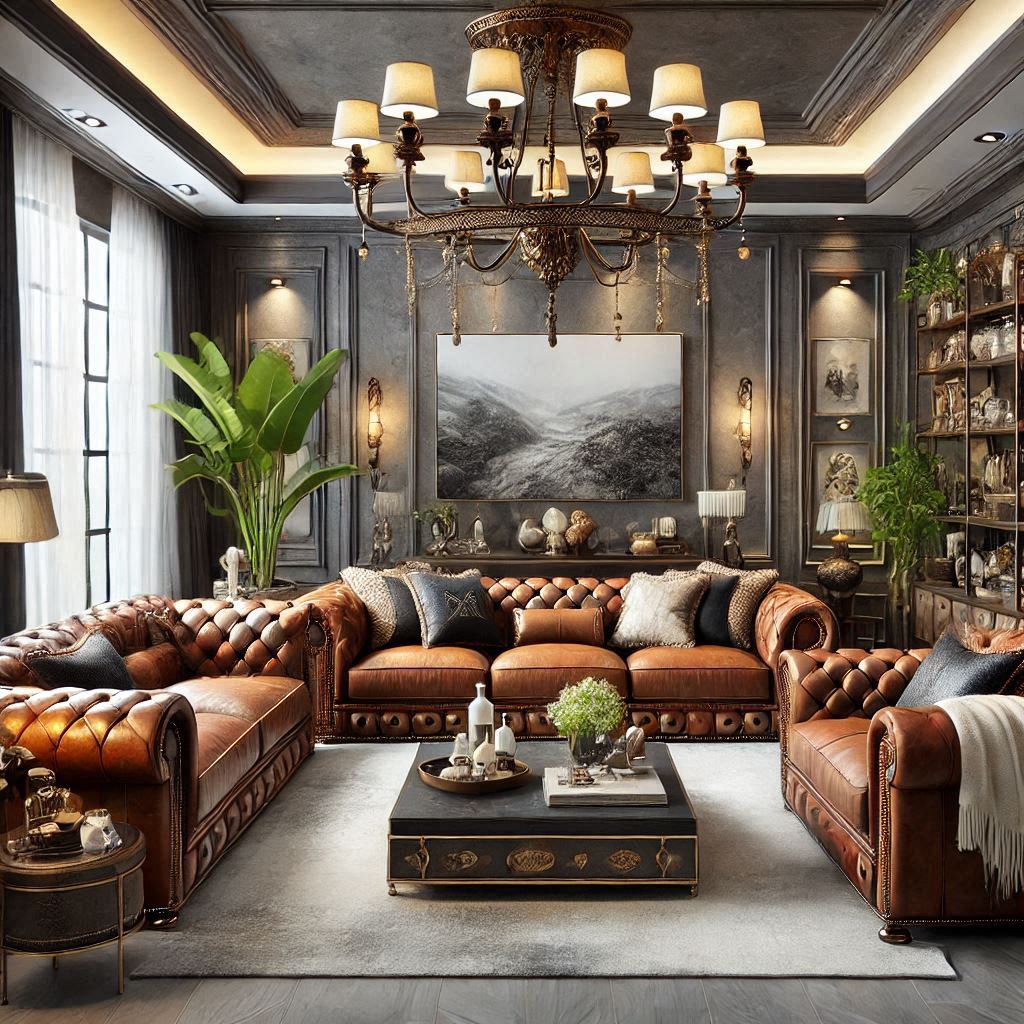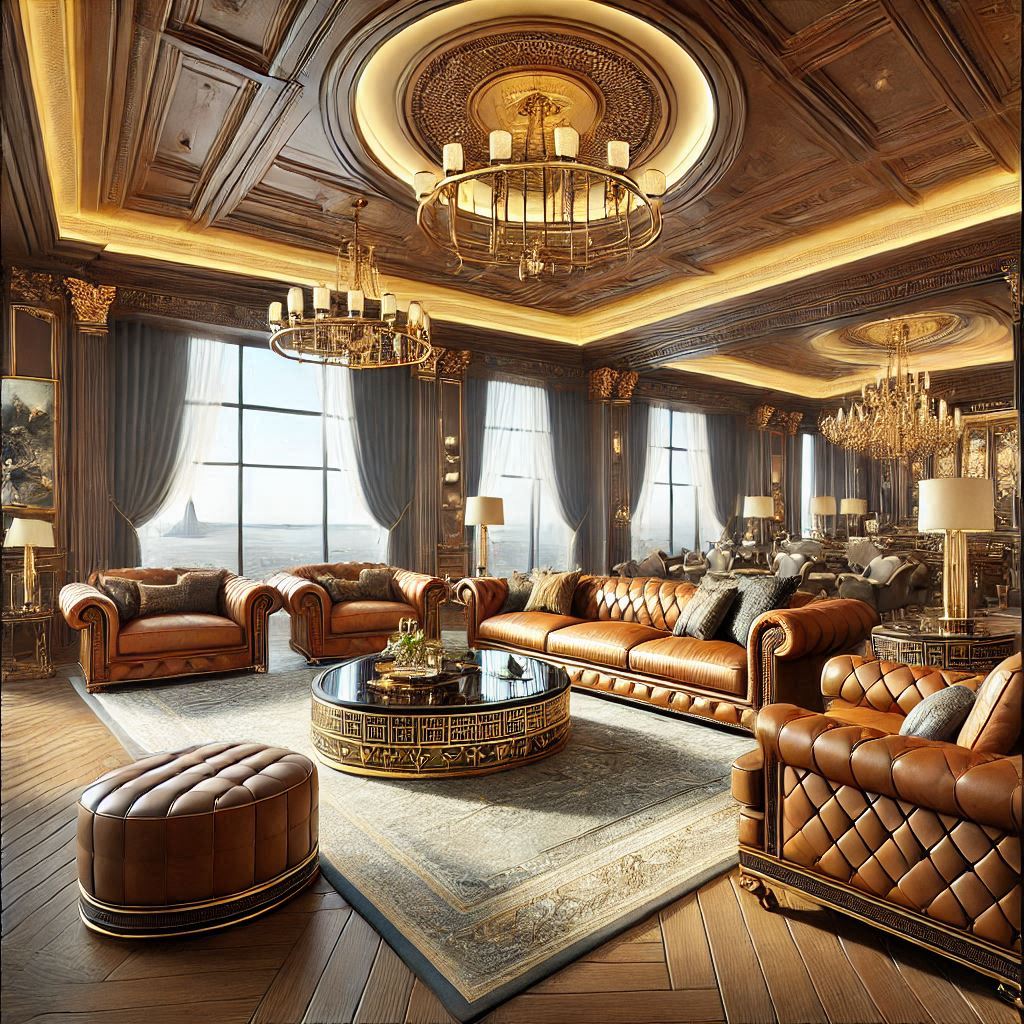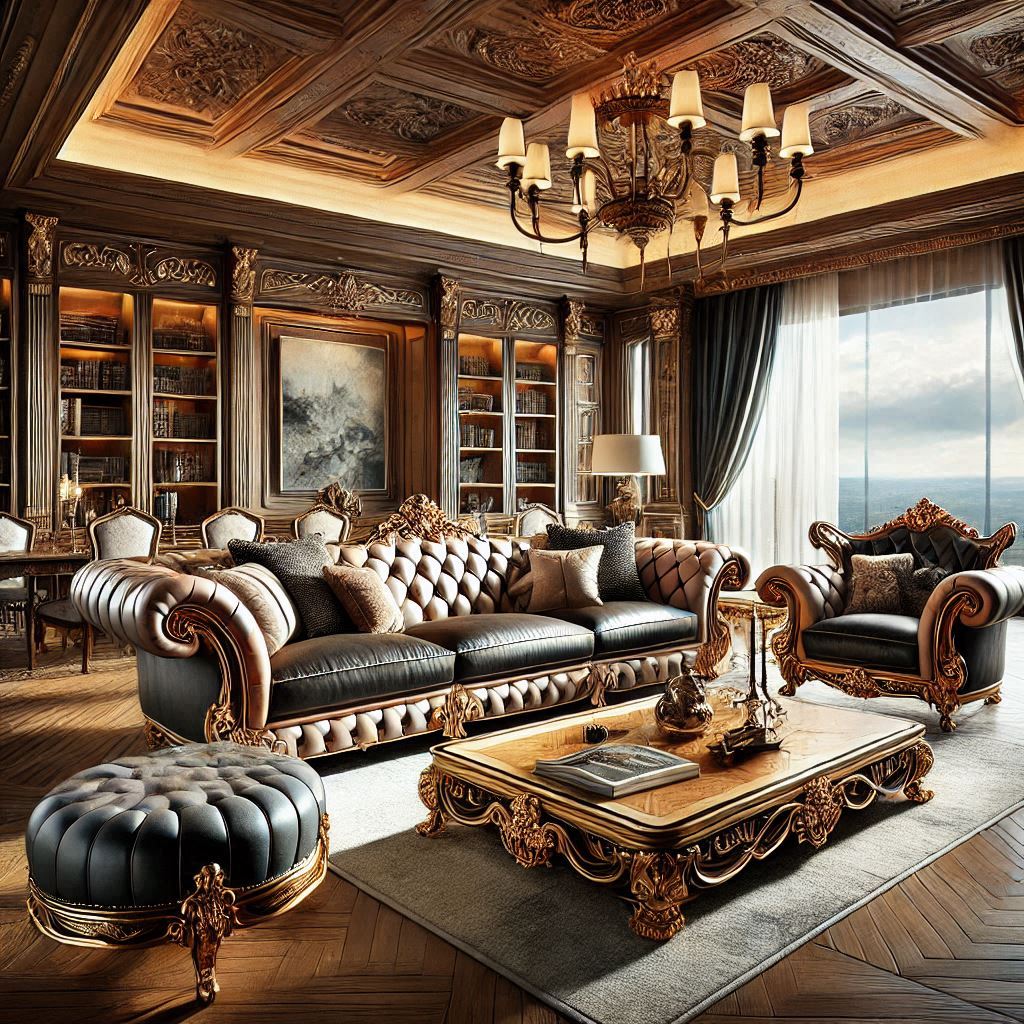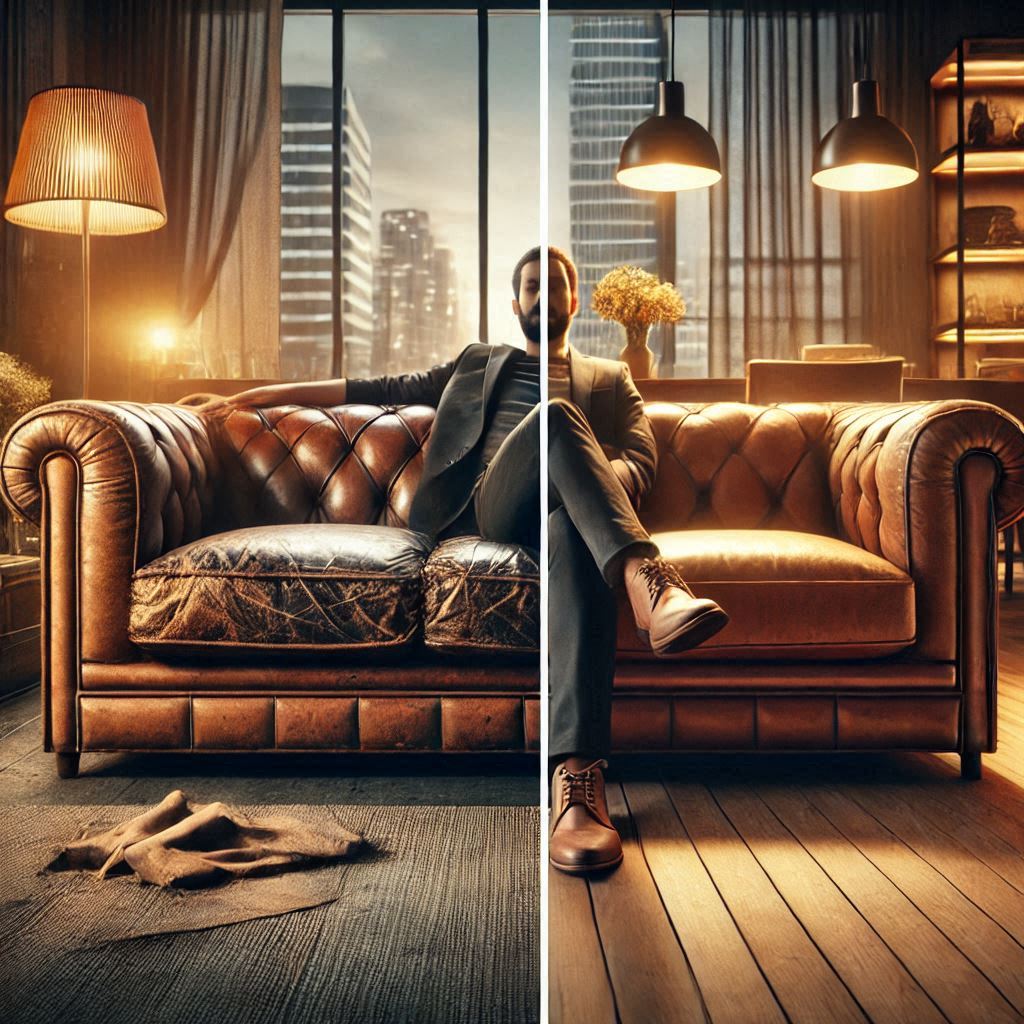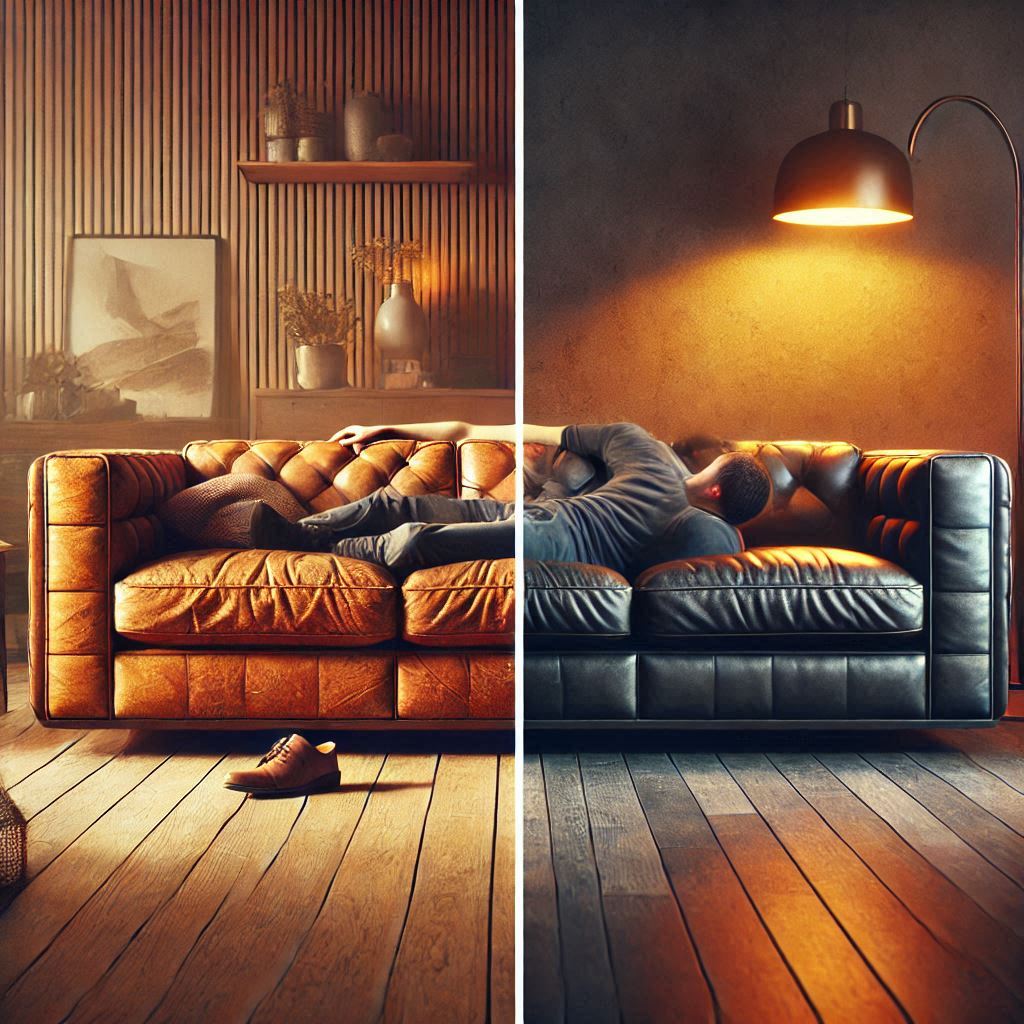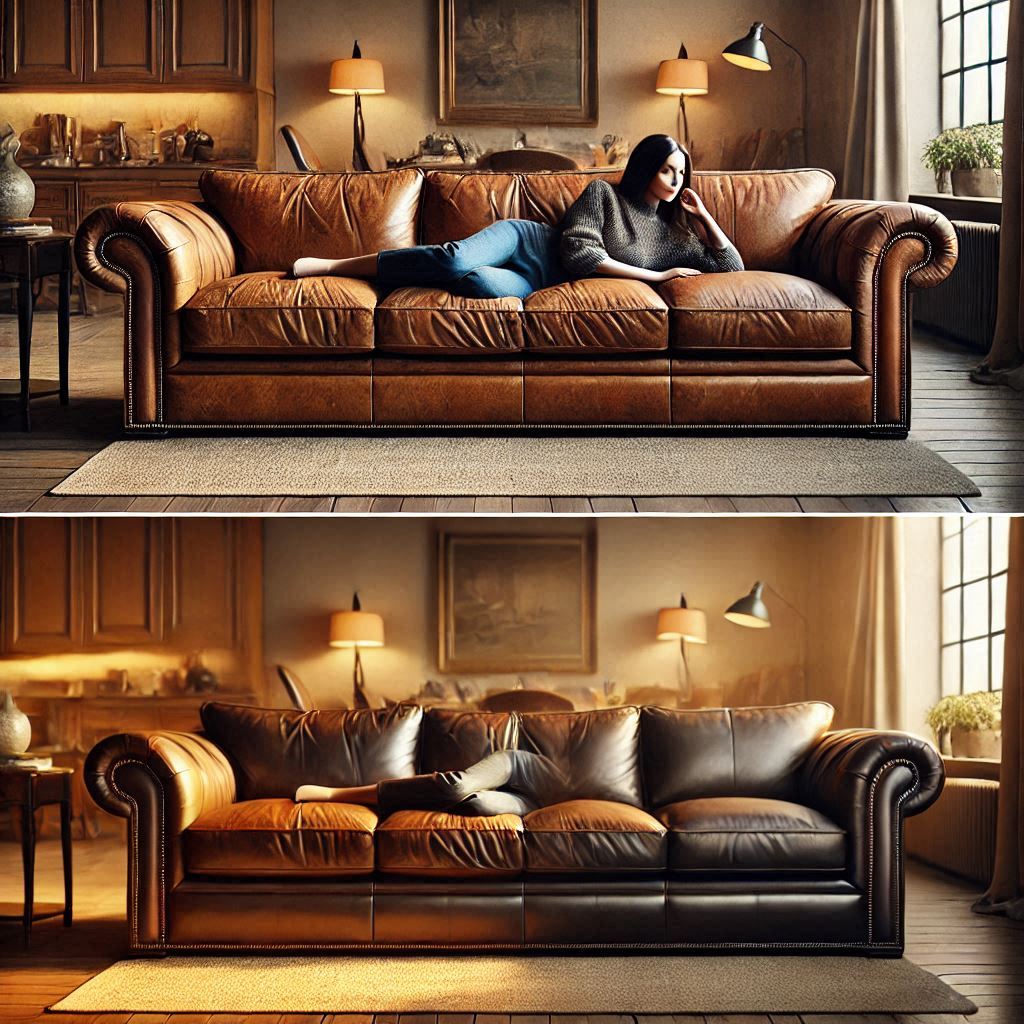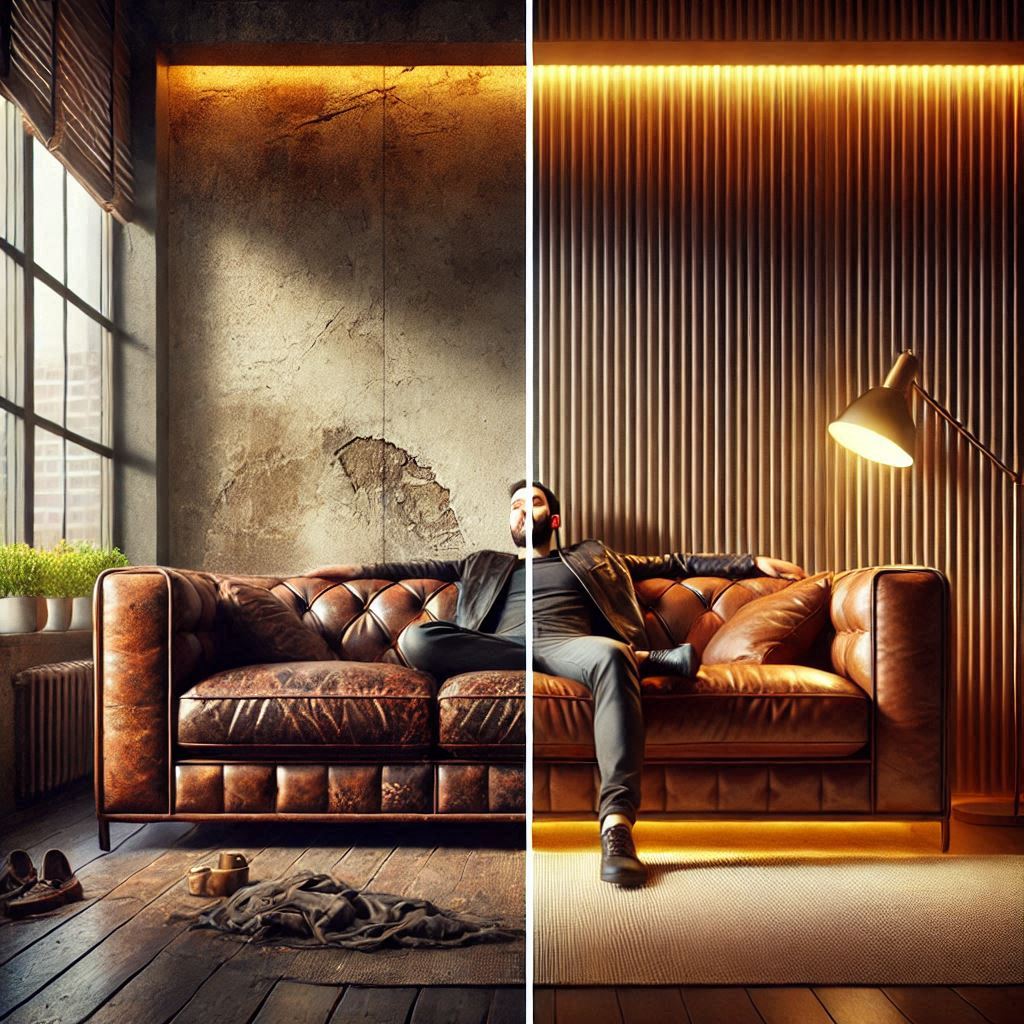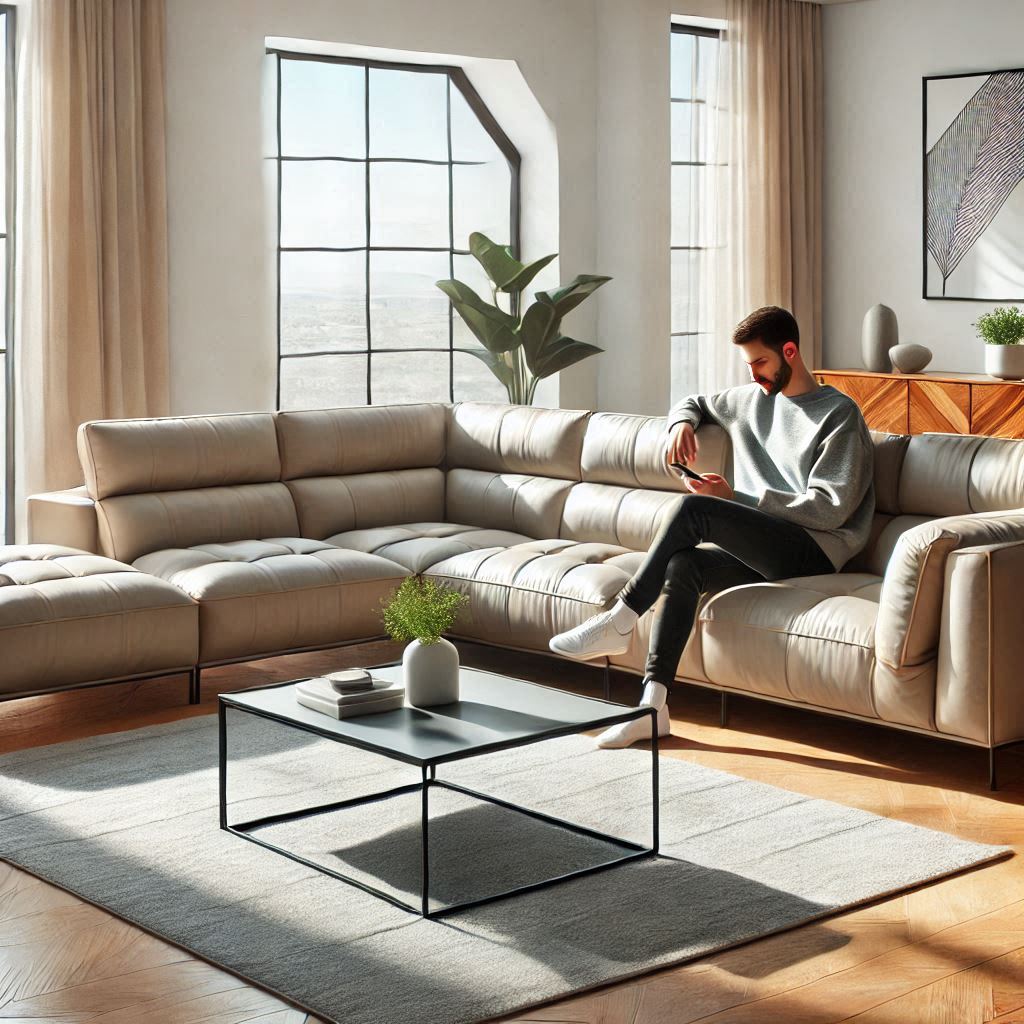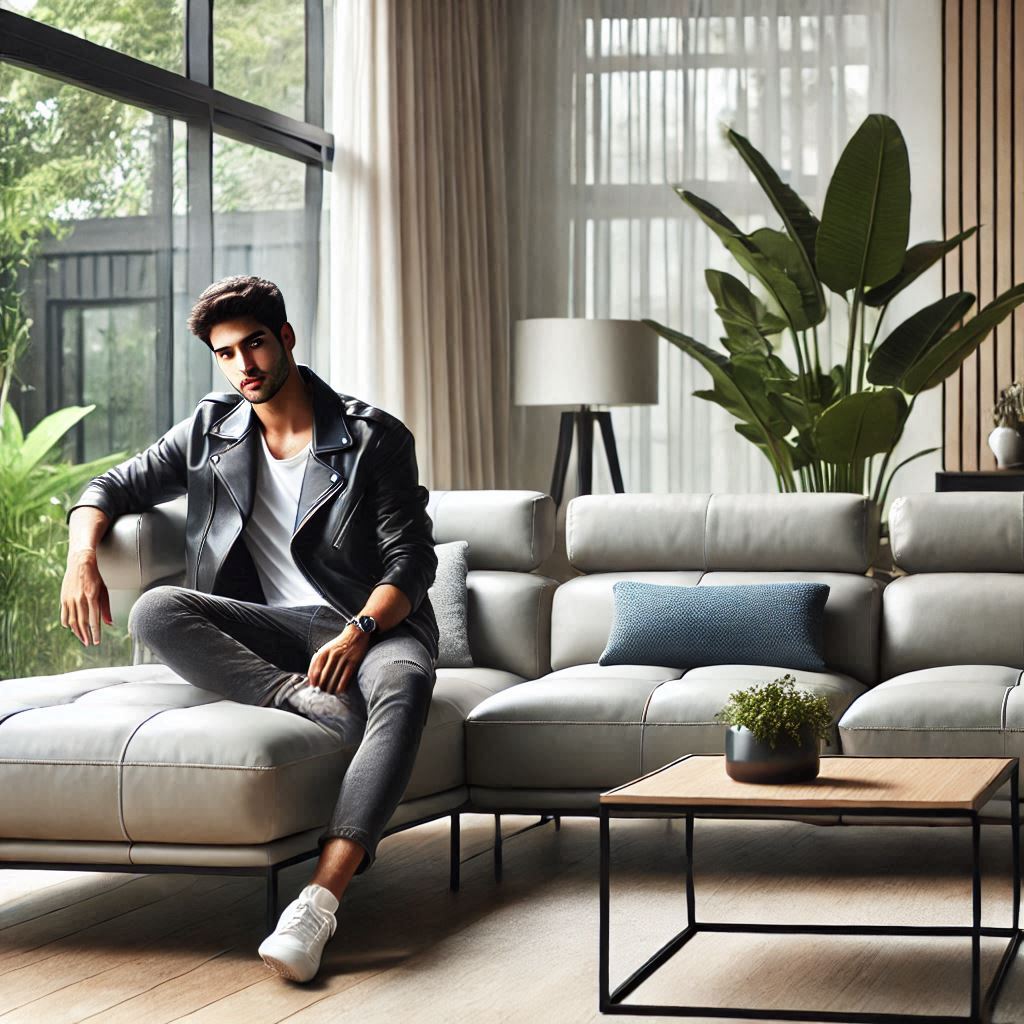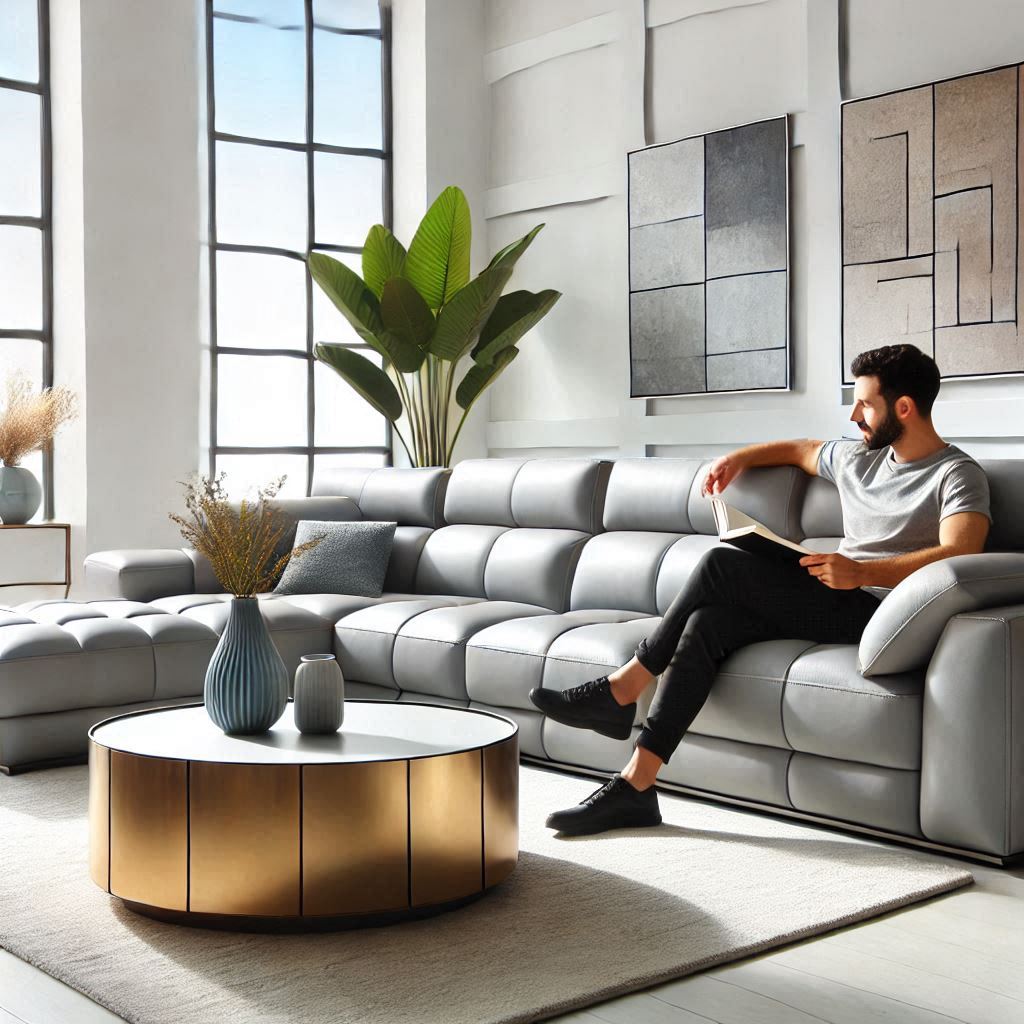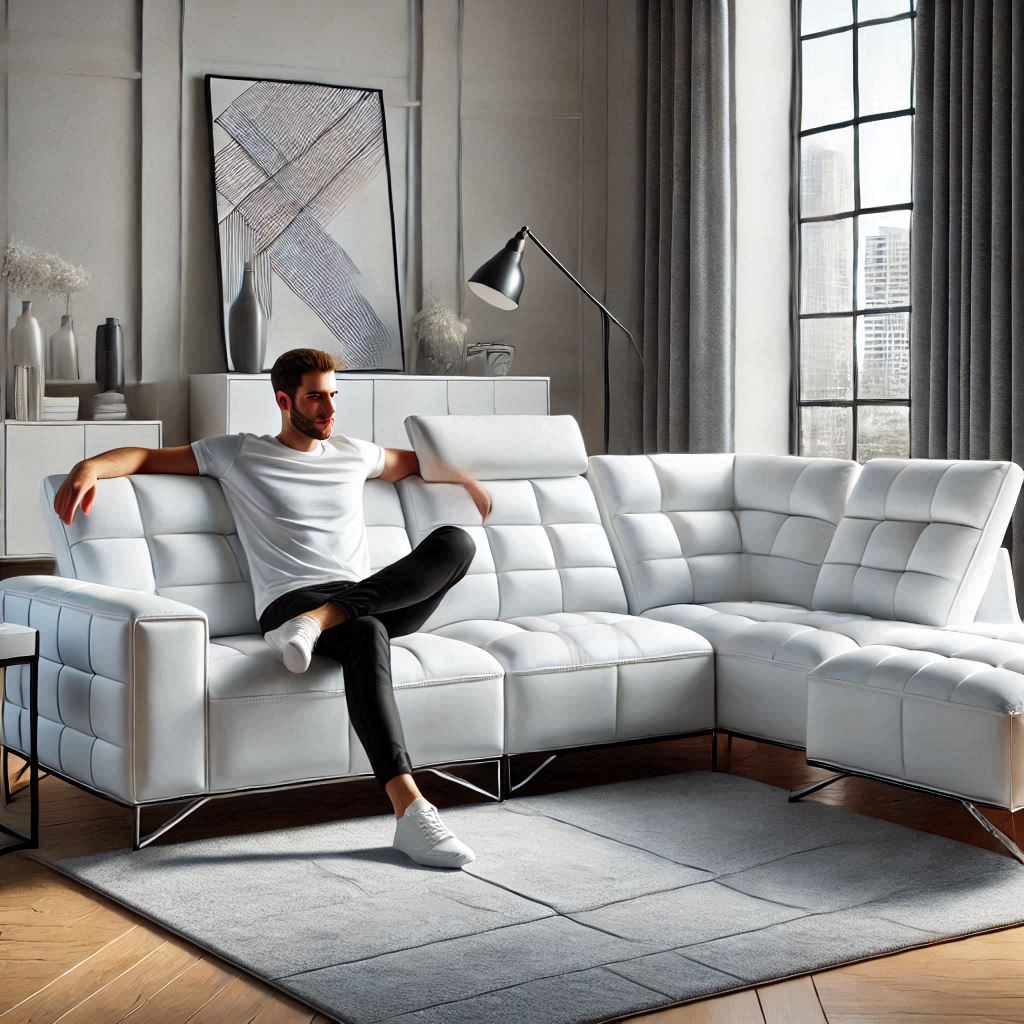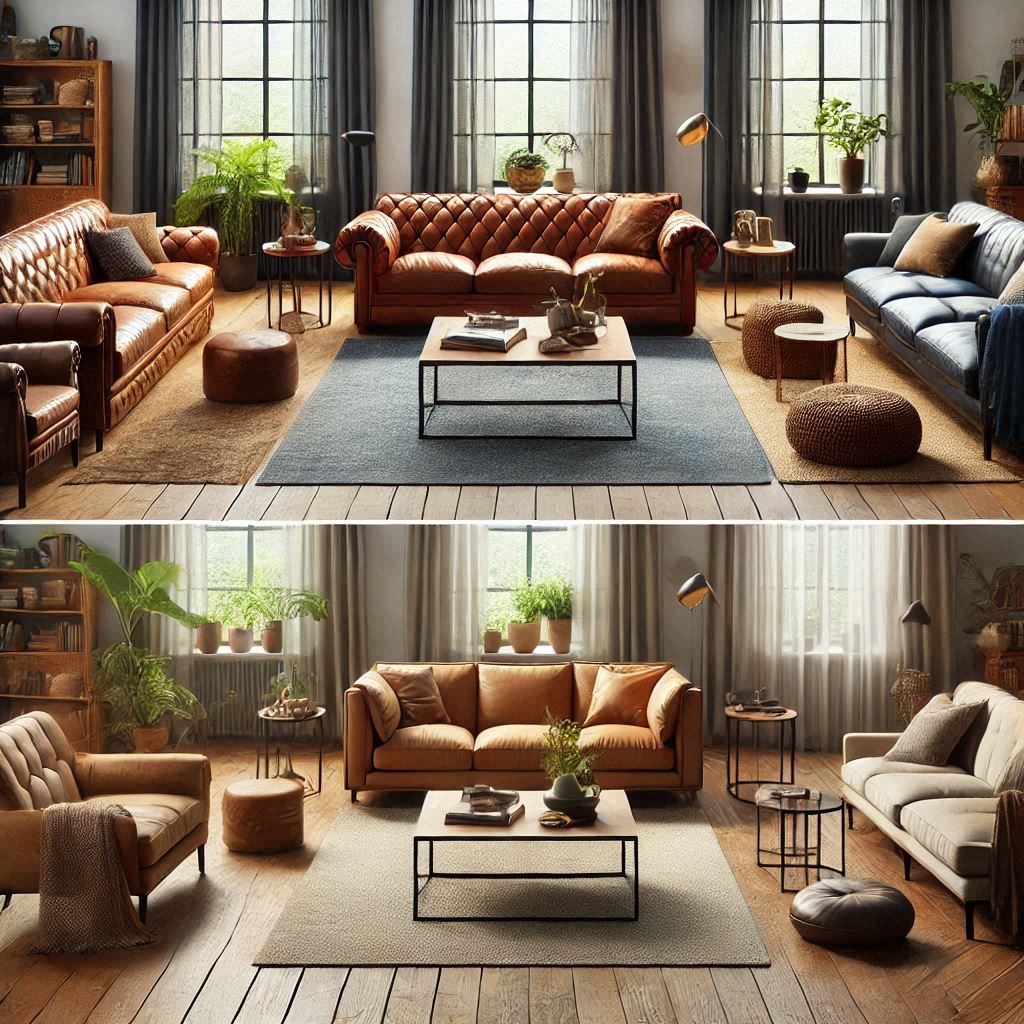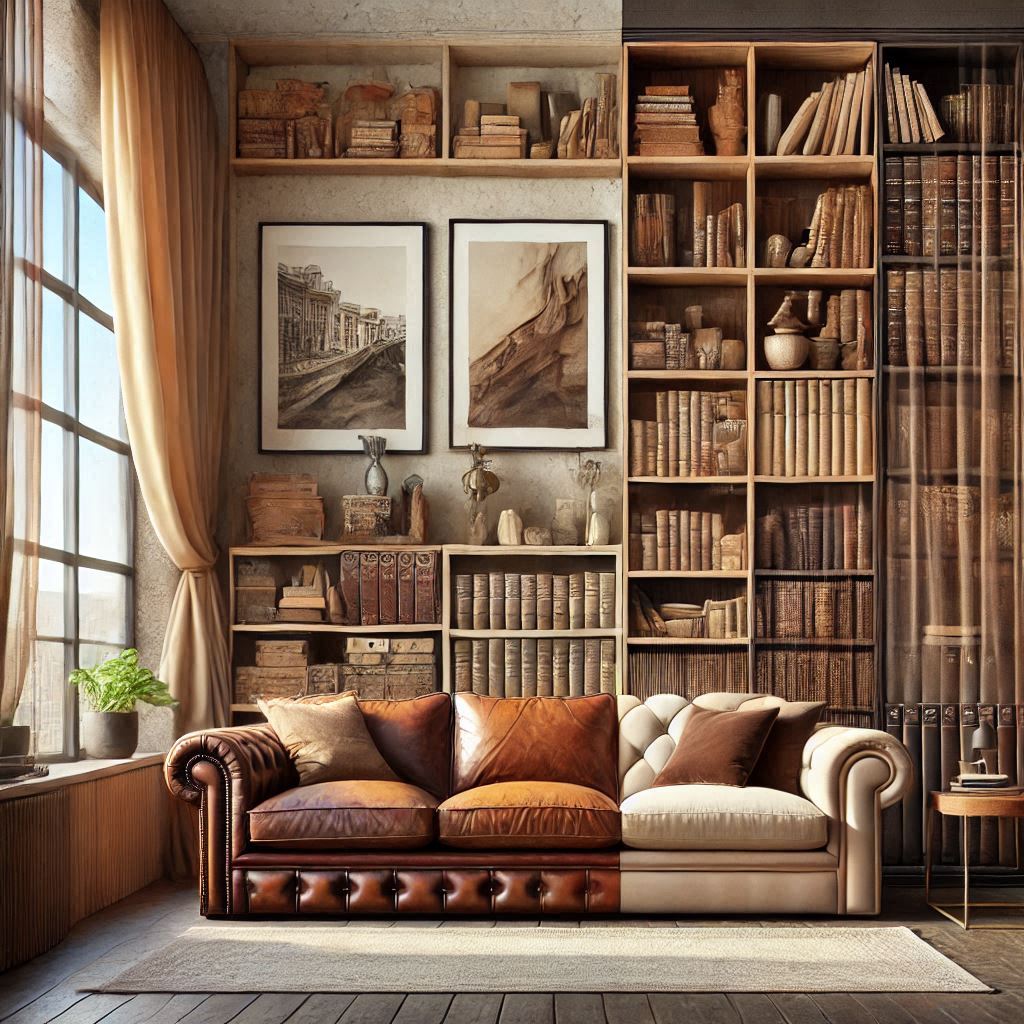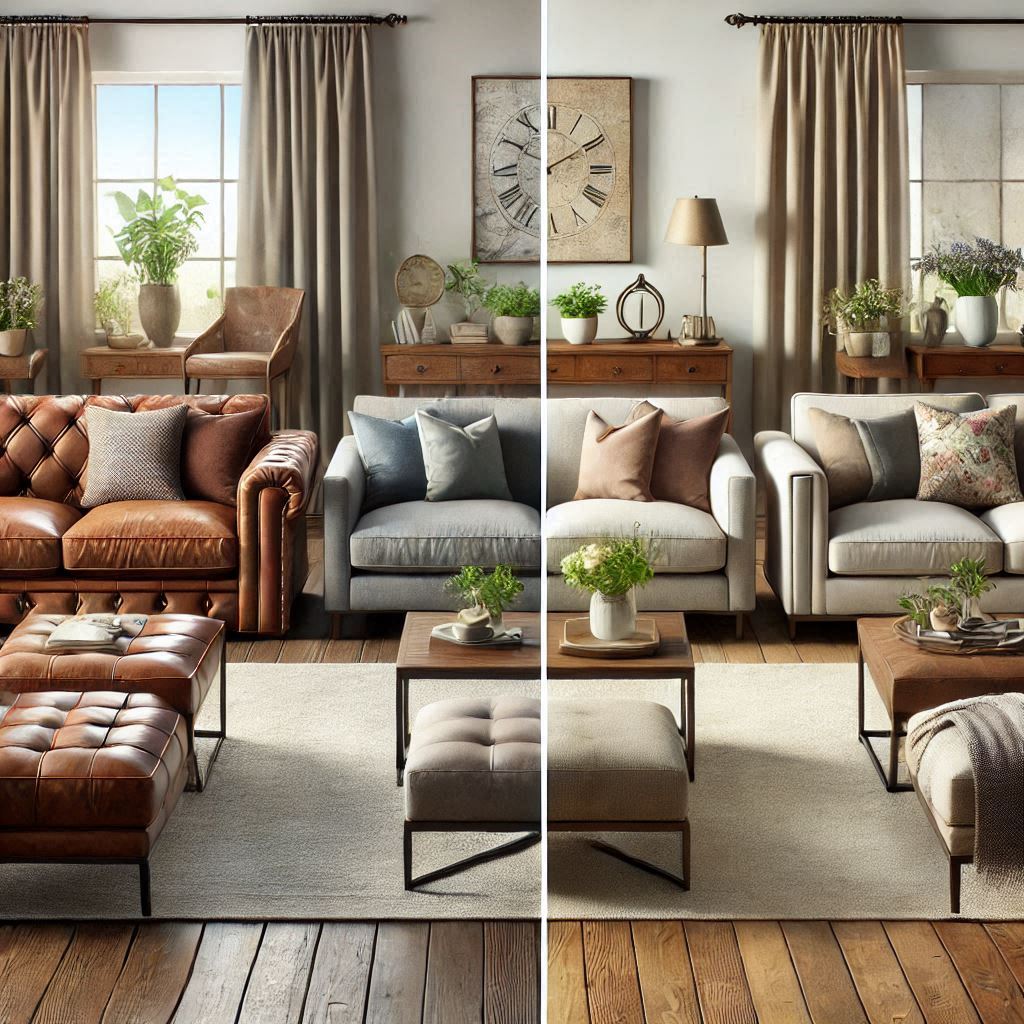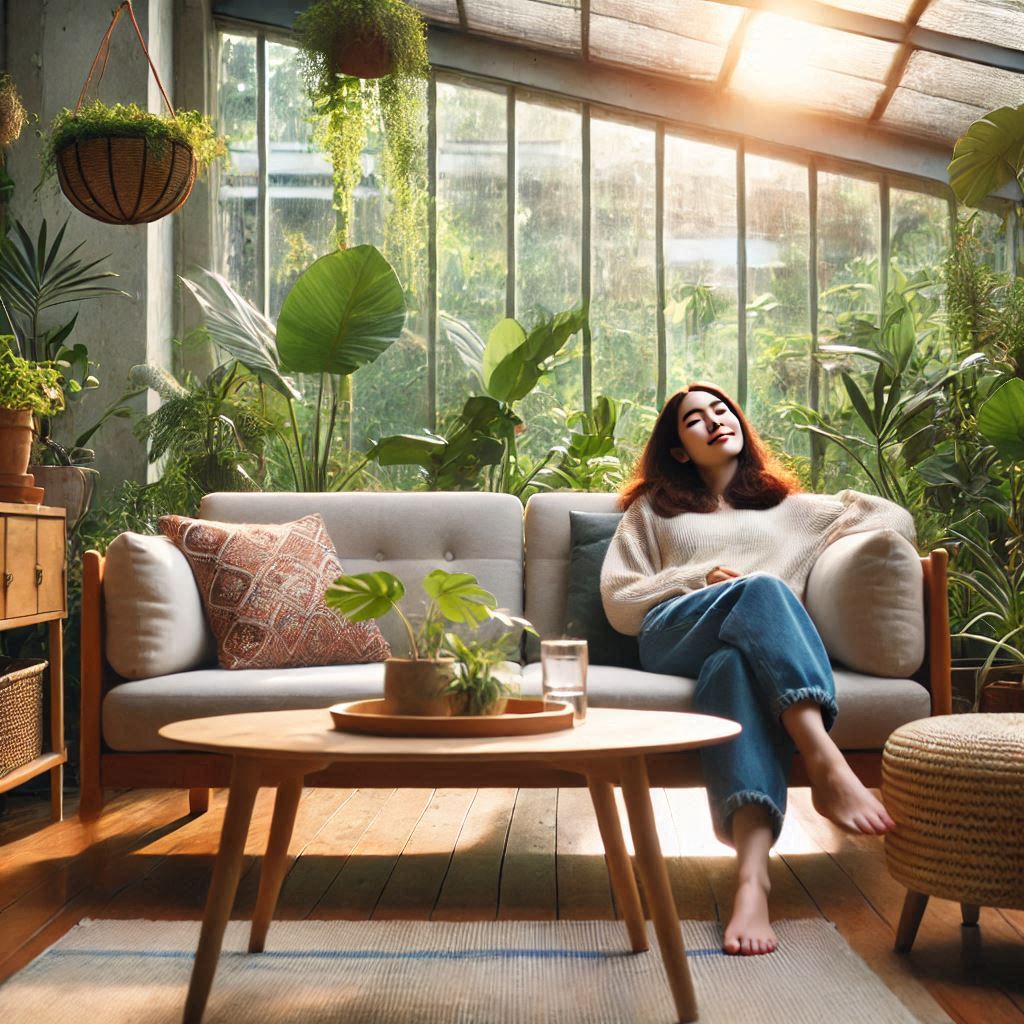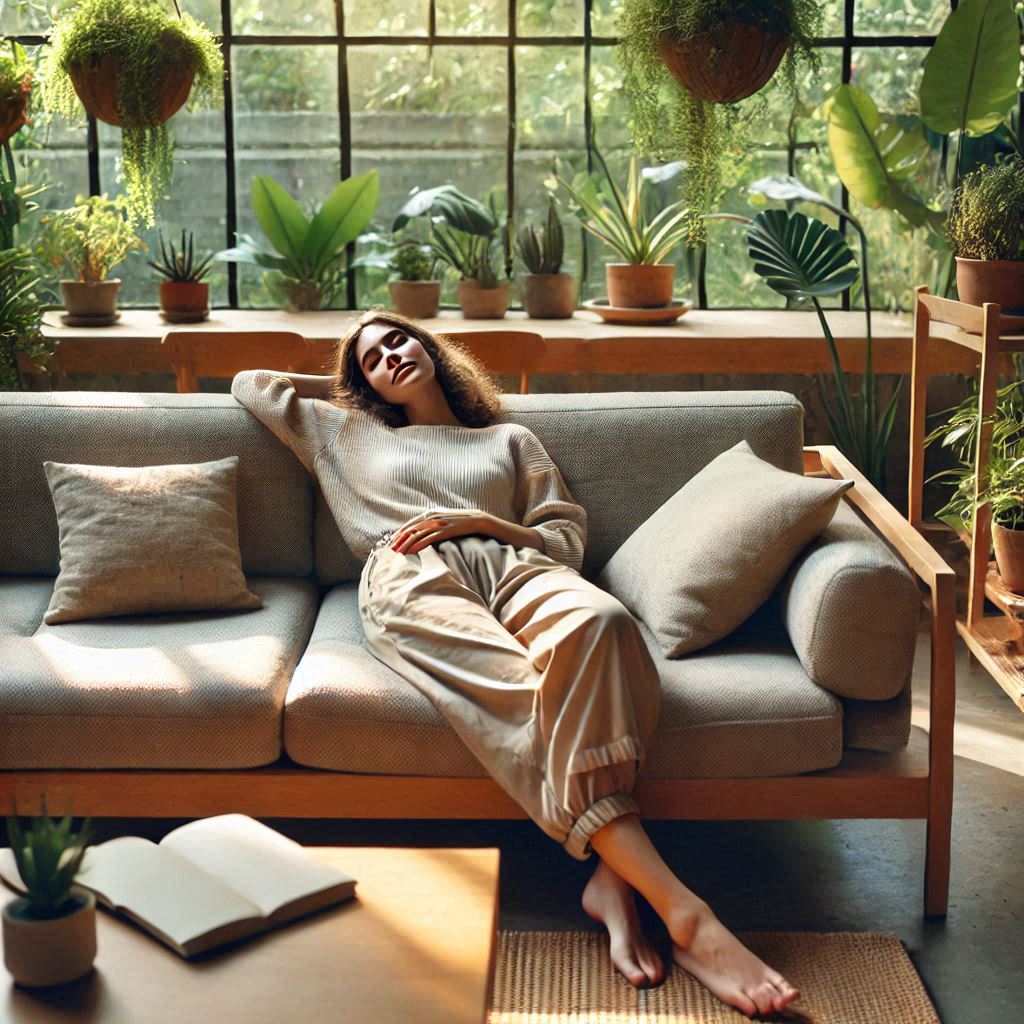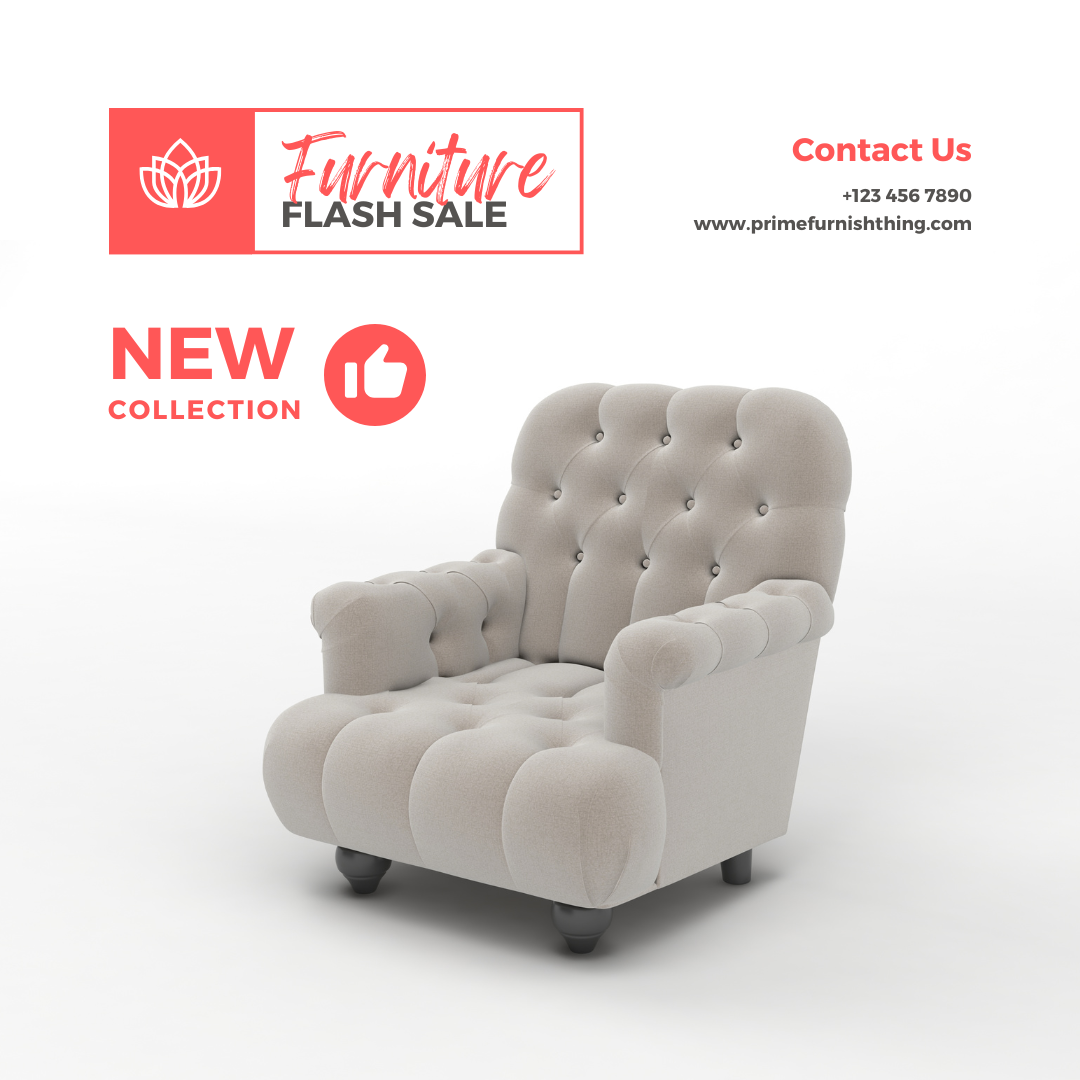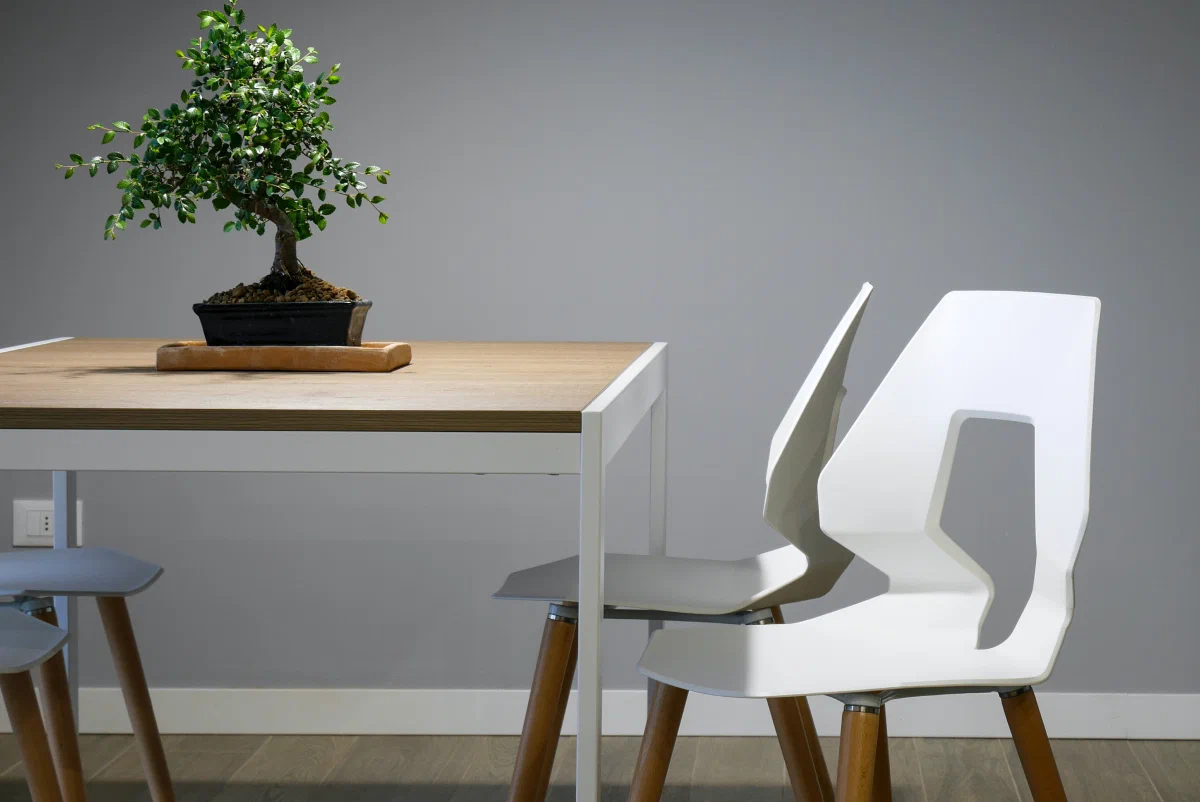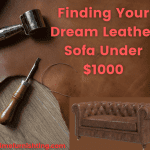
The Best Leather Sofa Under $1000:(Most Reviewed in amazon)
December 16, 2024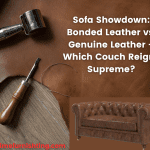
Most Confortable Sectional Sofas Under $2,000: A Quick Guide to Budget-Friendly Comfort
December 18, 2024
The Best Leather Sofa Under $1000:(Most Reviewed in amazon)
December 16, 2024
Most Confortable Sectional Sofas Under $2,000: A Quick Guide to Budget-Friendly Comfort
December 18, 2024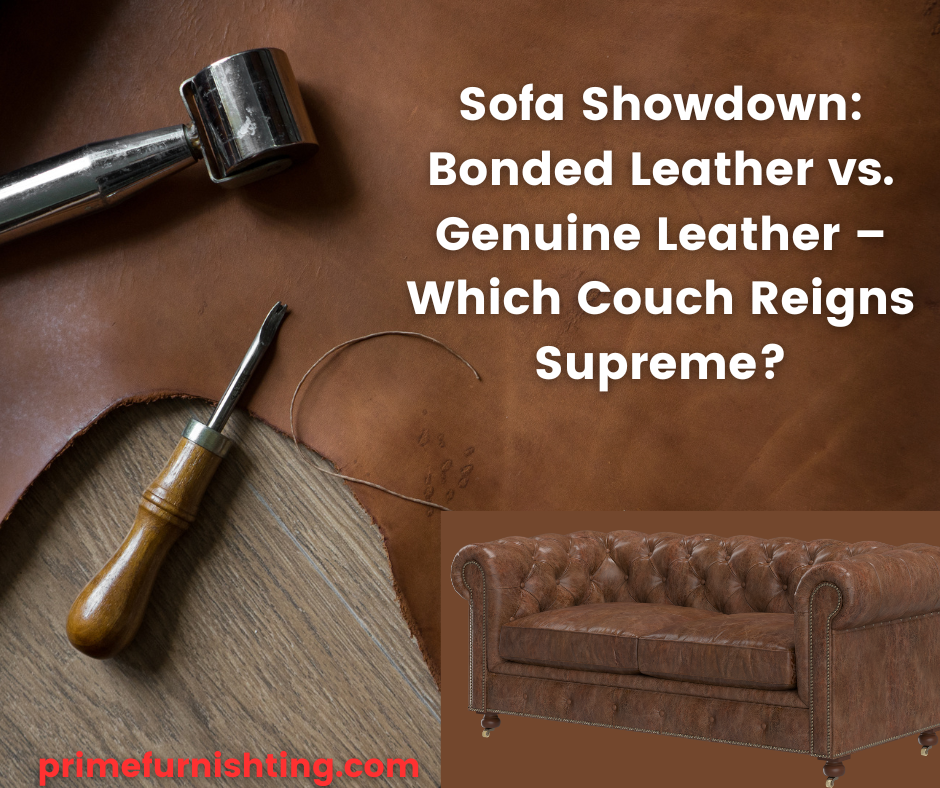
Sofa Showdown: Bonded Leather vs. Genuine Leather – Which Couch Reigns Supreme?
Okay, friends, let's talk sofas. Because finding the one – that perfect blend of comfort, style, and durability – can feel like searching for a unicorn riding a bicycle. And if you're wading through the world of leather couches, you've probably stumbled upon the age-old debate: bonded leather vs. genuine leather. So, grab your favorite throw pillow, because we're about to dive deep into the world of upholstery
When choosing between bonded leather and genuine leather for your couch, it’s essential to understand their differences in terms of quality, durability, and price.
Material Composition:
- Bonded Leather: Made from scraps of leather mixed with polyurethane and bonded to a fabric backing. It has a synthetic surface that mimics leather’s appearance but lacks its durability.
- Genuine Leather: Derived directly from animal hide, this is the lowest grade of real leather but still offers better longevity and a more natural texture than bonded leather.
2.Durability:
- Bonded Leather: Prone to peeling and cracking over time, especially with heavy use or exposure to sunlight.
- Genuine Leather: More durable and resistant to wear, though it may require proper care to prevent drying or cracking.
3.Price:
- Bonded Leather: More affordable, making it suitable for budget-conscious buyers.
- Genuine Leather: Higher cost but offers better value over time due to its durability.
4. Appearance and Feel:
- Bonded Leather: May feel less natural and lacks the unique grain patterns of real leather.
- Genuine Leather: Offers a more authentic look and feel, often softening with age.
5. Maintenance:
- Bonded Leather: Easier to clean but may not last long.
- Genuine Leather: Requires conditioning to maintain its appearance and longevity.
Verdict: Choose genuine leather if you prioritize quality, comfort, and long-term durability. Opt for bonded leather if you need a more budget-friendly option for temporary or light use.
What Are the 4 Types of Leather?
There are 4 main types of leather, each with different qualities and uses:
- Full-grain: The highest quality, using the entire hide. It's strong, durable, and develops a patina over time.
- Top-grain: The second-highest quality, where the outer layer is sanded to remove imperfections. It's more flexible and thinner than full-grain.
- Split-grain: Made from the remaining hide after the top layers are removed. It's often used to make suede and is less durable.
- Bonded leather: Made from leftover scraps of leather that are shredded and bonded together. It's the least durable and lowest quality.
Leather is categorized based on its processing method and quality. The four main types of leather are:
1. Full-Grain Leather
- Definition: Made from the top layer of animal hide, full-grain leather retains the natural grain, imperfections, and texture of the hide.
- Characteristics:
- Extremely durable and ages beautifully, developing a unique patina over time.
- Breathable and resistant to wear.
- Uses: High-end furniture, luxury handbags, and premium shoes.
- Pros: Superior quality, authentic texture, and unmatched durability.
- Cons: Expensive and requires regular maintenance.
2. Top-Grain Leather
- Definition: Derived from the second layer of the hide, it is sanded and treated to remove imperfections, resulting in a smoother surface.
- Characteristics:
- Less natural than full-grain but still high-quality.
- More stain-resistant and easier to clean due to a protective finish.
- Uses: Mid-tier furniture, wallets, and bags.
- Pros: Smooth surface, affordable compared to full-grain, and versatile.
- Cons: Slightly less durable and doesn’t develop patina like full-grain leather.
3. Genuine Leather
- Definition: Made from the lower layers of the hide after the top layers are removed. It is heavily processed and often embossed to mimic higher-grade leather.
- Characteristics:
- A budget-friendly option for leather products.
- Offers a leather look but lacks durability and authenticity.
- Uses: Budget furniture, belts, and accessories.
- Pros: Affordable and widely available.
- Cons: Less durable, prone to cracking, and doesn’t age well.
4. Bonded Leather
- Definition: Created from leftover leather scraps mixed with polyurethane and bonded to a fabric backing. It’s not real leather but mimics its appearance.
- Characteristics:
- Economical but not durable.
- May crack or peel over time with heavy use.
- Uses: Budget-friendly furniture and book bindings.
- Pros: Inexpensive and eco-friendly (uses leather waste).
- Cons: Lacks the quality and durability of genuine leather.
5. Type of Leather comparaison
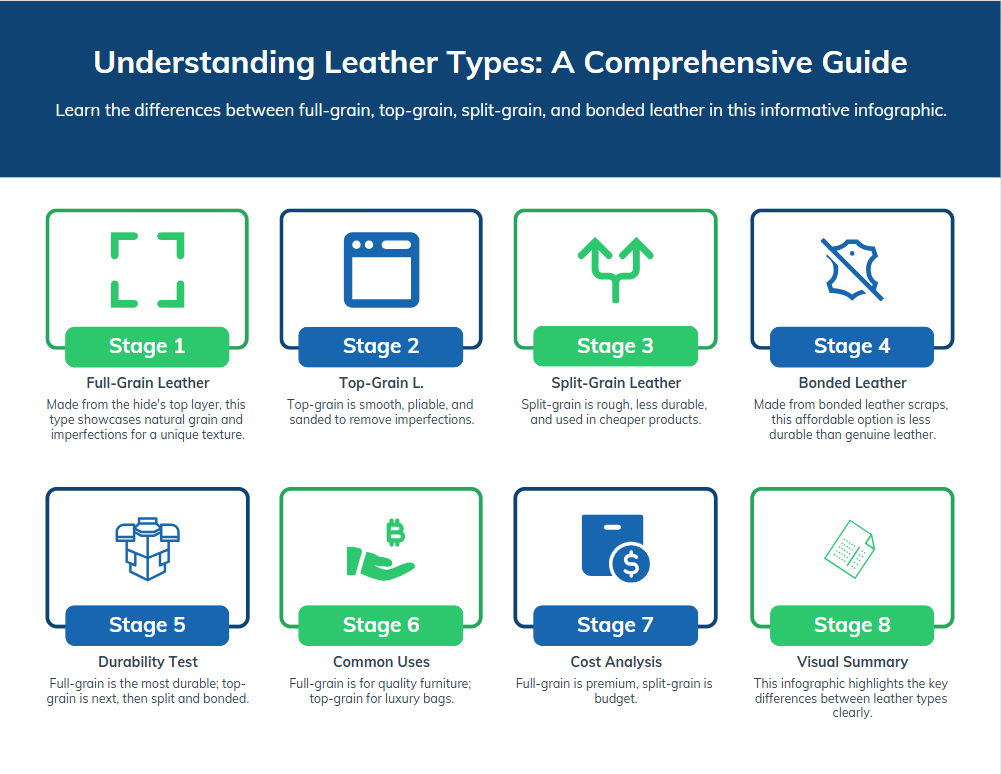
| Type | Quality | Durability | Price | Uses |
|---|---|---|---|---|
| Full-Grain Leather | Highest | Extremely Durable | Expensive | Luxury goods, premium furniture |
| Top-Grain Leather | High | Durable | Moderately Expensive | Mid-tier furniture, handbags |
| Genuine Leather | Moderate | Average | Affordable | Belts, wallets, budget furniture |
| Bonded Leather | Lowest | Poor | Cheapest | Low-cost furniture, bindings |
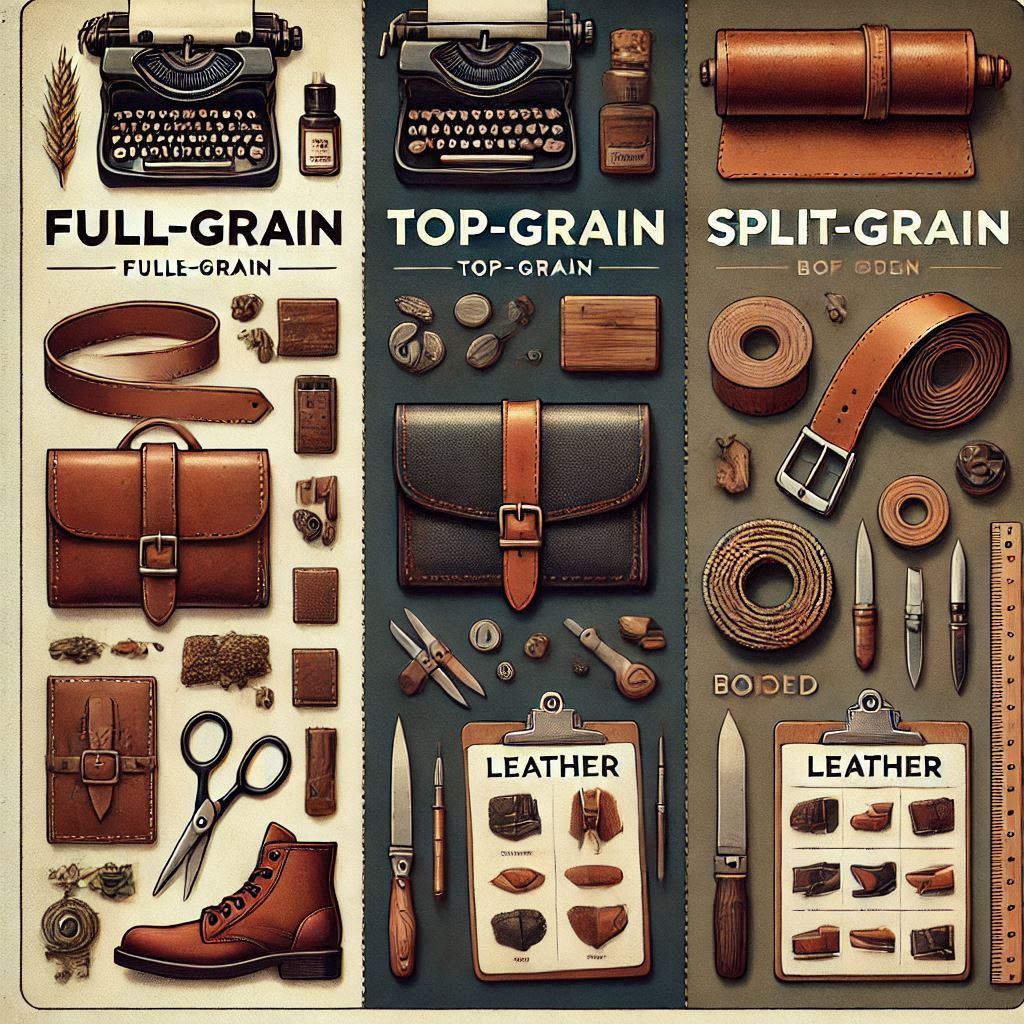
Questions:
- What Exactly is Bonded Leather?
- And What Makes Genuine Leather "Genuine"?
- Durability Face-Off: Bonded vs. Genuine – Who Wins?
- Comfort and Feel: Which Leather Feels Best?
- Cost Comparison: Is Bonded Leather Always Cheaper?
- How Can I Tell the Difference Between Bonded and Genuine Leather?
- Which Leather is Better for My Lifestyle?
What Exactly is Bonded Leather?
Bonded leather is a composite material made from shredded leather scraps bonded together with polyurethane or latex. It's essentially the hot dog of the leather world – a mix of leftovers, if you will.
Think of it like this: when you make a delicious roast chicken, you might use the leftover bones to make a flavorful broth. Bonded leather is similar. The scraps of leather left over from making genuine leather products are ground up, mixed with bonding agents, and then rolled onto a fabric backing. This creates a material that looks a bit like leather but has a very different composition.
And What Makes Genuine Leather "Genuine"?
Expert opinion
Genuine leather refers to leather made directly from animal hides, retaining the natural grain and texture. It’s the real deal!
Consumer review:
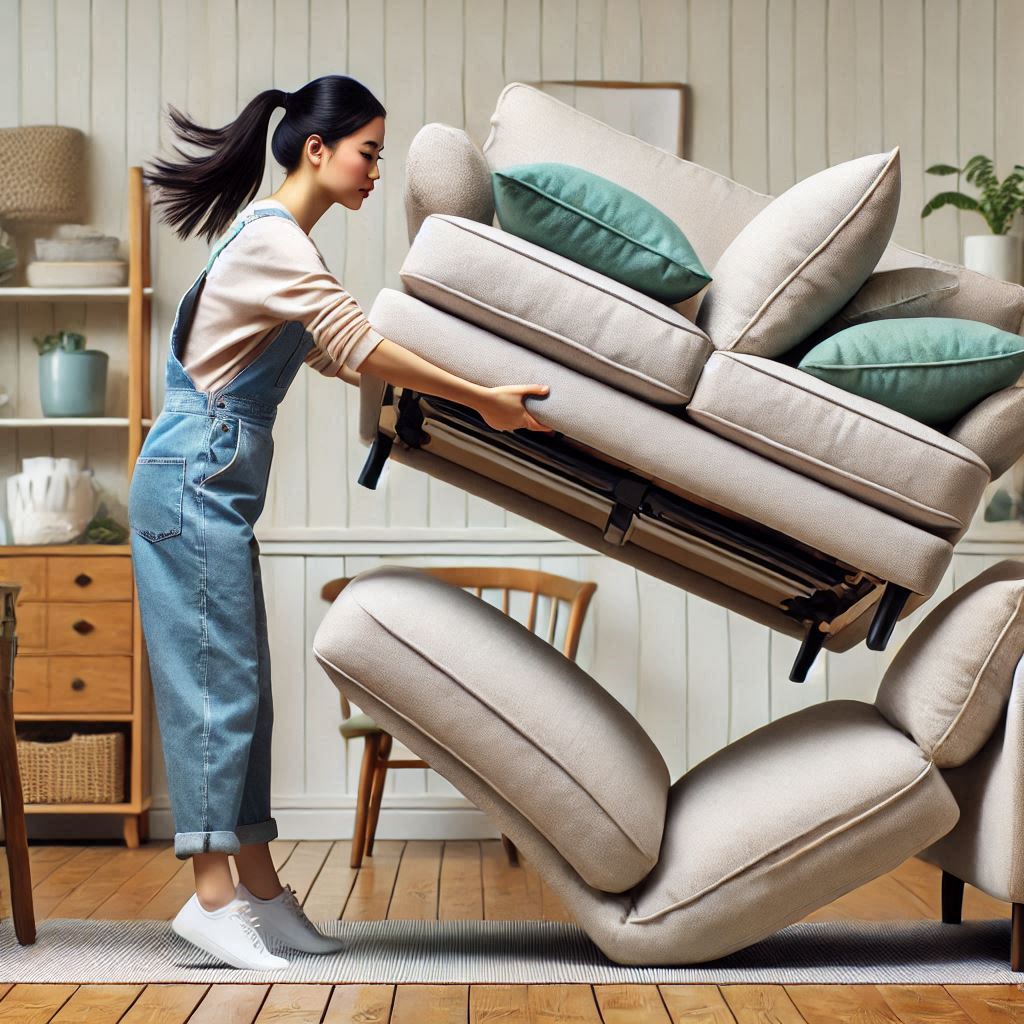
Genuine leather is made from the full or top layer of animal hide. This means it retains the natural markings, imperfections (which are often considered part of its charm!), and unique characteristics of the animal. Think of it as the filet mignon of the leather world – high-quality and full of flavor (or, you know, texture).
Durability Face-Off: Bonded vs. Genuine – Who Wins?
Genuine leather is significantly more durable and long-lasting than bonded leather. Bonded leather tends to crack and peel over time, especially with heavy use.
This is where the biggest difference lies. Genuine leather, with proper care, can last for decades, developing a beautiful patina over time. Bonded leather, on the other hand, is more susceptible to wear and tear. The bonding agents can break down, causing the material to crack, peel, and flake, especially in high-traffic areas. It's like comparing a sturdy oak table to one made of particleboard – one is built to last, the other…well, not so much.
Comfort and Feel: Which Leather Feels Best?
Genuine leather is generally softer, more supple, and breathes better than bonded leather.
Cost Comparison: Is Bonded Leather Always Cheaper?
Bonded leather is typically less expensive than genuine leather upfront, but its shorter lifespan can make it less cost-effective in the long run.
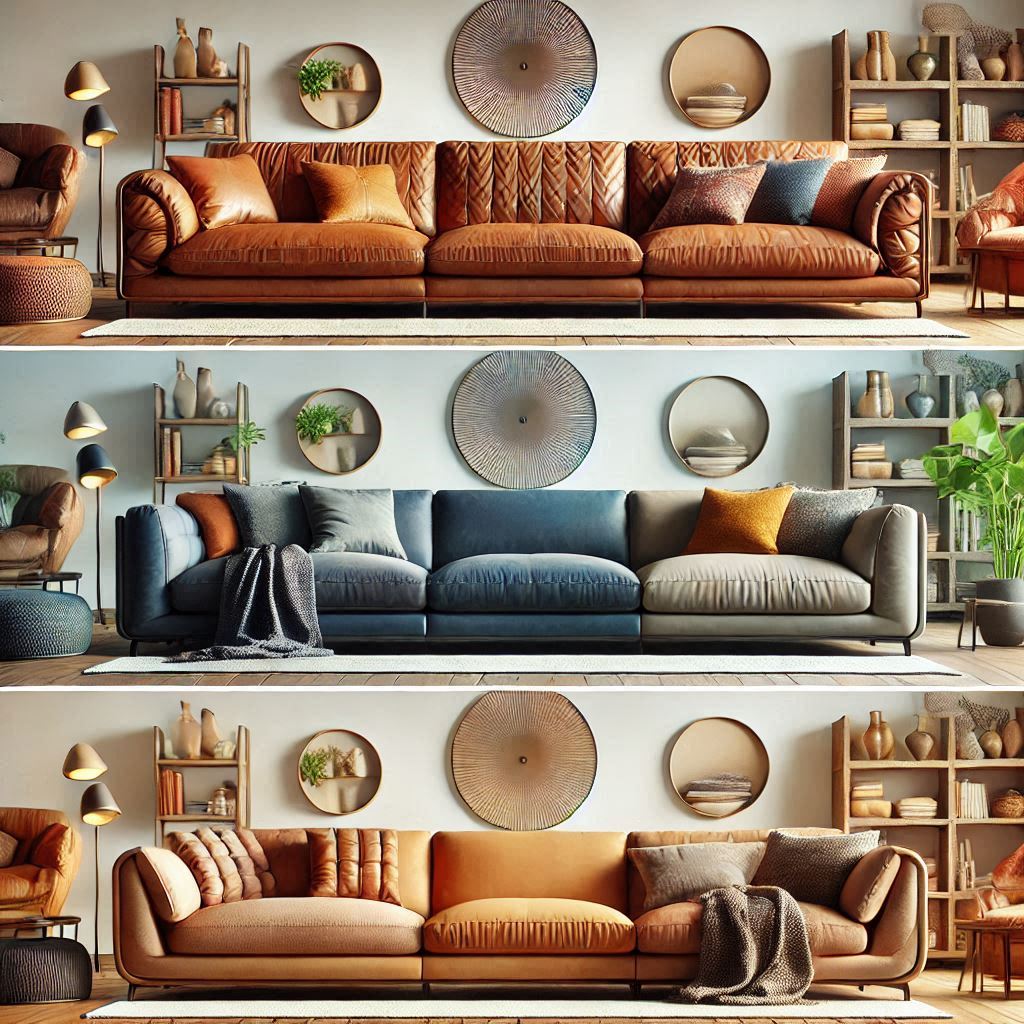
While the initial price tag of a bonded leather sofa might be tempting, consider its longevity. You might end up replacing it sooner than a genuine leather sofa, which could cost you more in the long run. It's like buying a cheap pair of shoes that fall apart after a few months versus investing in a quality pair that lasts for years.
How Can I Tell the Difference Between Bonded and Genuine Leather?
Look for the following clues: the smell (genuine leather has a distinct odor), the texture (genuine leather has natural variations), the edges (bonded leather has smooth, uniform edges), and the price (genuine leather is usually more expensive).
A few quick tips:
- Smell Test: Genuine leather has a distinctive, earthy smell. Bonded leather often smells more like plastic.
- Touch Test: Genuine leather has a natural grain and texture with variations. Bonded leather has a more uniform, almost artificial feel.
- Edge Inspection: The edges of genuine leather are often rough or unfinished. Bonded leather has clean, even edges.
Which Leather is Better for My Lifestyle?
If you're on a tight budget and need a temporary solution, bonded leather might suffice. However, for long-term durability, comfort, and value, genuine leather is the better investment.
If you have kids or pets, genuine leather is much more resistant to scratches and spills (though still requires care). If you're looking for a piece of furniture that will last for years and develop a beautiful patina, genuine leather is the way to go. It's an investment, yes, but one that will pay off in the long run.
So, there you have it, friends! The lowdown on bonded leather vs. genuine leather. Hopefully, this helps you make the best decision for your home and your style. Now go forth and find that perfect sofa – you deserve it!
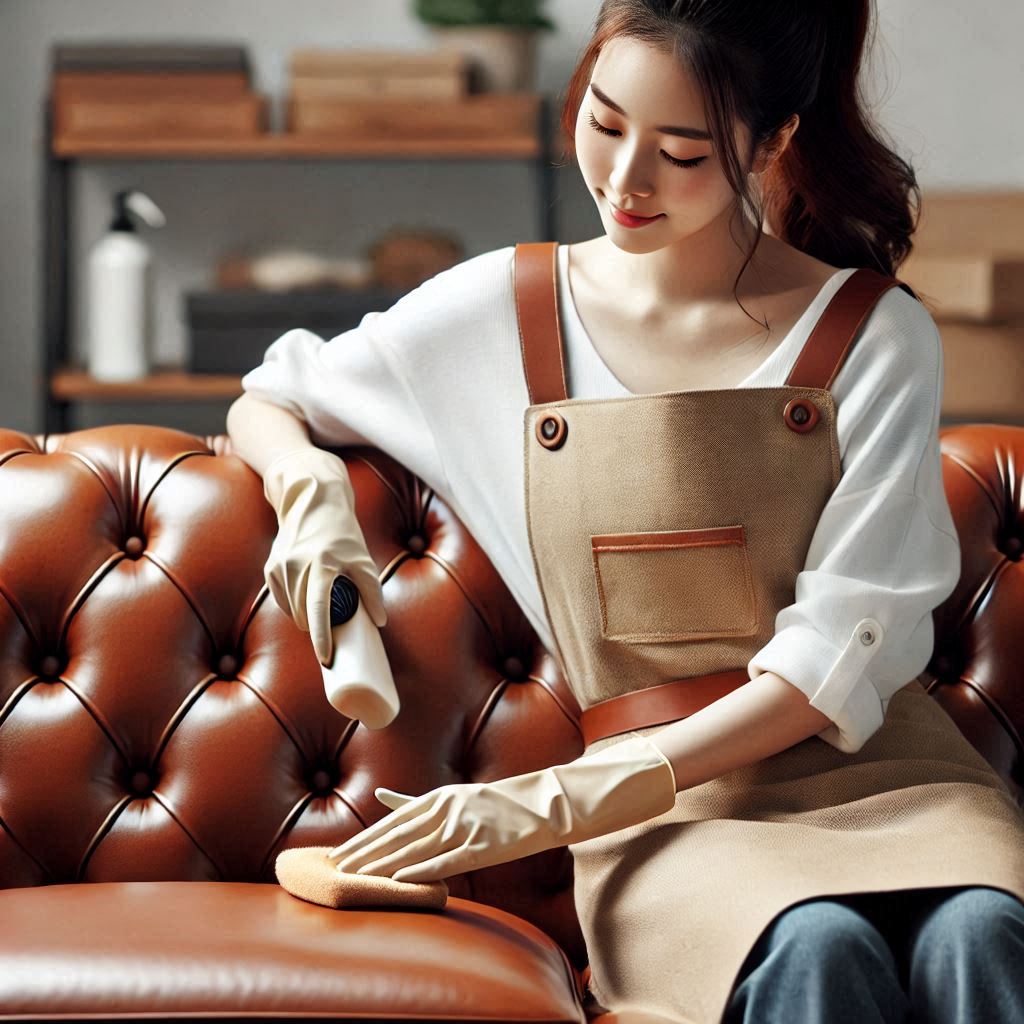
- Check the product description: Ikea is usually pretty transparent about the type of leather used in each product. The product description on their website or the tag on the furniture itself will specify whether it's top-grain, split-grain, or bonded leather.
- Look for the leather type in the product name: Sometimes, the product name itself will give you a clue. For example, if it says "GRAN," it usually indicates top-grain leather.
- Feel the leather: Top-grain leather will generally feel softer and more supple than split-grain or bonded leather. If it feels stiff or plastic-like, it's probably bonded leather.
My Experience and Some Advice:
My recommendation:
If you're looking for a leather piece from Ikea, I would suggest investing in something made with top-grain or at least split-grain leather if your budget allows. It will be more durable and last much longer.
In Conclusion:
Yes, Ikea uses real leather, but it's essential to pay attention to the type of leather used. By checking the product description and feeling the leather, you can make an informed decision and choose a piece that will meet your needs and last for years to come. Don't just assume all Ikea leather is the same, because it’s not.
Is Leather Worth It for a Couch?
Okay, this depends on your lifestyle and preferences. I think leather is totally worth it. It's durable, easy to clean (most of the time), and it looks great. Plus, it develops a nice patina over time, which gives it character. But, leather can be more prone to scratches from pets or sharp objects. I had a friend who’s cat used their leather sofa as a scratching post. It wasn’t pretty. I know that if you have pets or kids, you might want to consider a more durable fabric.
Okay, let's dive into whether a leather couch is a worthwhile investment. It's a big decision, and there are definitely pros and cons to consider. I’ve gone back and forth on this myself over the years!
The Pros of Leather Couches:
- Durability: This is a big one. Good quality leather is tough and can withstand a lot of wear and tear. I remember my grandparents had a leather couch that lasted for decades. It just seemed to get better with age. It’s definitely more durable than most fabrics.
- Easy to Clean: Spills? No biggie (usually). Leather is relatively easy to wipe clean with a damp cloth. I've definitely appreciated this feature after a few accidental wine spills. It’s not stain proof, but it’s pretty good at resisting stains if you act quickly.
- Style and Aesthetics: Let's face it, leather couches look great. They add a touch of sophistication and elegance to any room. They can be modern, classic, or even rustic, depending on the style. I always feel like my living room looks a bit more put-together when I have a leather piece.
- Comfort: Leather can be very comfortable, especially top-grain leather. It softens over time and molds to your body. It does get cold in the winter and warm in the summer, though, which can be a bit of a drawback.
- Resale Value: A well-maintained leather couch can hold its value pretty well, especially if it's a high-quality piece from a reputable brand.
The Cons of Leather Couches:
- Cost: Leather couches are generally more expensive than fabric couches. This is the biggest hurdle for most people. It was for me at first! I had to save up for a while before I could afford a decent one.
- Susceptibility to Scratches and Damage: While durable, leather can be scratched by pets' claws or sharp objects. I've seen some pretty sad-looking leather couches with cat scratches all over them. You have to be careful.
- Temperature Sensitivity: As I mentioned earlier, leather can feel cold in the winter and hot in the summer. This can be uncomfortable for some people.
- Maintenance: While easy to clean, leather does require regular conditioning to prevent it from drying out and cracking. This is an extra step that some people might find tedious.
- Fading: Direct sunlight can cause leather to fade over time. It's best to keep leather furniture out of direct sunlight or use window coverings to protect it.
My Personal Take:
I've had both fabric and leather couches, and I have to say, I prefer leather. I just like the look and feel of it. I have a dog now, which is a bit of a concern with scratches, but I've found that keeping his nails trimmed helps a lot. I also use a leather conditioner regularly, which keeps the leather soft and supple.
Is It Worth It For You?
Here are some things to consider:
- Budget: Can you afford a good quality leather couch? If you're on a tight budget, you might be better off with a durable fabric option.
- Lifestyle: Do you have pets or kids? If so, you might want to consider a more durable fabric or be prepared to take extra precautions to protect your leather couch.
- Personal Preference: Do you like the look and feel of leather? Some people just prefer the comfort of fabric.
In Conclusion:
Leather couches are a great investment if you're looking for a durable, stylish, and comfortable piece of furniture. However, they are more expensive and require some maintenance. Weigh the pros and cons carefully to decide if a leather couch is the right choice for you. If you decide to go for it, you won’t regret it!
Shopping tip:
Online retailers often have more affordable options for sectionals than brick-and-mortar stores.
What to Expect at This Price Point:
- Faux Leather/Vegan Leather: This is the most common material you'll find in this price range. It's made from synthetic materials like polyurethane or PVC. It can mimic the look of leather pretty well, and it's often more durable than bonded leather.
- Bonded Leather: As we discussed before, this is made from leftover leather scraps. It's the least durable option and prone to peeling and cracking. I'd generally advise against it, especially for a piece of furniture that will get a lot of use like a sectional.
- Smaller Sectionals: You'll likely find smaller sectionals or those with a chaise rather than a full second section. This helps keep the cost down.
- Simpler Designs: Don't expect elaborate designs or high-end features like power reclining at this price point.
Where to Look:
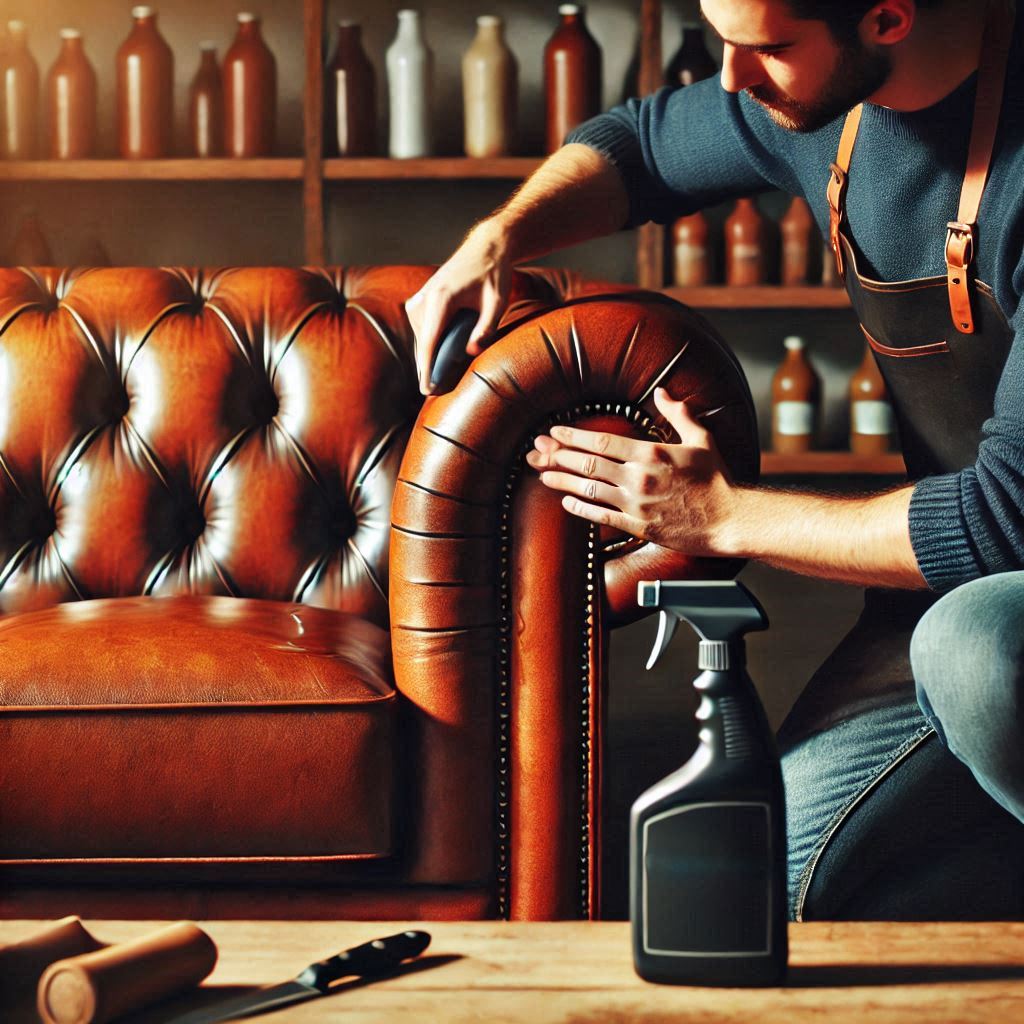
- Online Retailers: Online furniture stores often have a wider selection and more competitive prices than brick-and-mortar stores. Places like Wayfair, Amazon, and Overstock can be good options.
- Big Box Stores: Stores like Walmart and Target sometimes have affordable sectional options, especially their online selection.
- Discount Furniture Stores: These stores specialize in selling furniture at lower prices, often by sourcing overstock or closeout items.
My Experience and Some Tips:
I remember helping a friend furnish their first apartment. They were on a tight budget and really wanted a sectional. We ended up finding a decent faux leather sectional online for under $800. It wasn't the highest quality, but it looked good and served its purpose for a few years.
Here are some things I learned:
- Read reviews carefully: Pay close attention to reviews that mention durability and how the material holds up over time.
- Check the dimensions: Make sure the sectional will fit comfortably in your space.
- Look for a sturdy frame: Even with faux leather, a solid frame is important for longevity.
- Don't expect it to last forever: At this price point, you're likely not buying a piece of furniture that will last for decades. But with proper care, it should last for a few years.
In Conclusion:
Finding a great sectional for under $1000 is definitely achievable, but you'll likely have to compromise on the material. Faux leather is a good option at this price point, but be sure to do your research and read reviews. With realistic expectations and some careful shopping, you can find a stylish and functional sectional that fits your budget.
When buying a sofa, what factors do you pay the most attention to?
Buying a sofa is a big decision! It's an investment in your comfort, your style, and your home's overall aesthetic. Here are the factors I pay the most attention to when choosing a sofa:
- Comfort: Comfort is king (or queen!). A sofa should be a place where you can relax and unwind, so make sure it's comfortable for you and your family. Test out different sofas in person and pay attention to the seat depth, back height, and overall feel.
- Style: Your sofa should complement your personal style and the overall aesthetic of your home. Consider the size, shape, and design of the sofa, and how it will fit in with your existing décor.
- Durability: A sofa is a significant investment, so you want to make sure it's built to last. Look for a sofa with a sturdy frame, high-quality cushions, and durable fabric.
- Fabric Choice: The fabric you choose will affect the look, feel, and maintenance of your sofa. Consider your lifestyle and choose a fabric that's durable, easy to clean, and suits your needs.
- Size and Scale: Make sure the sofa is the right size for your space. Measure your room carefully and consider the scale of the sofa in relation to other furniture in the room.
- Budget: Set a budget before you start shopping and stick to it. There are beautiful and comfortable sofas available at all price points.
By considering these factors, you can choose a sofa that you'll love for years to come.
Conclusion
And there you have it, design darlings! We've explored the wonderful world of designer couch care, from everyday rituals like cushion fluffing and vacuuming to stain-removal strategies and fabric-specific spa treatments. We've even delved into the art of prevention, because let's face it, a little proactive protection can save you a whole lot of heartache (and maybe even a new sofa!).
Remember, your designer couch is an investment in your home's style and your comfort. It's a place to gather with loved ones, relax after a long day, and create memories that will last a lifetime. So, treat it with the love and care it deserves!
By following these tips and tricks, you can keep your sofa looking fabulous for years to come. And who knows, maybe your guests will think you have a secret stash of fairy dust that keeps your furniture looking perpetually pristine (shhh, we won't tell them your secret!).
So go forth and pamper your pretty! Your sofa (and your Instagram feed) will thank you.


